-
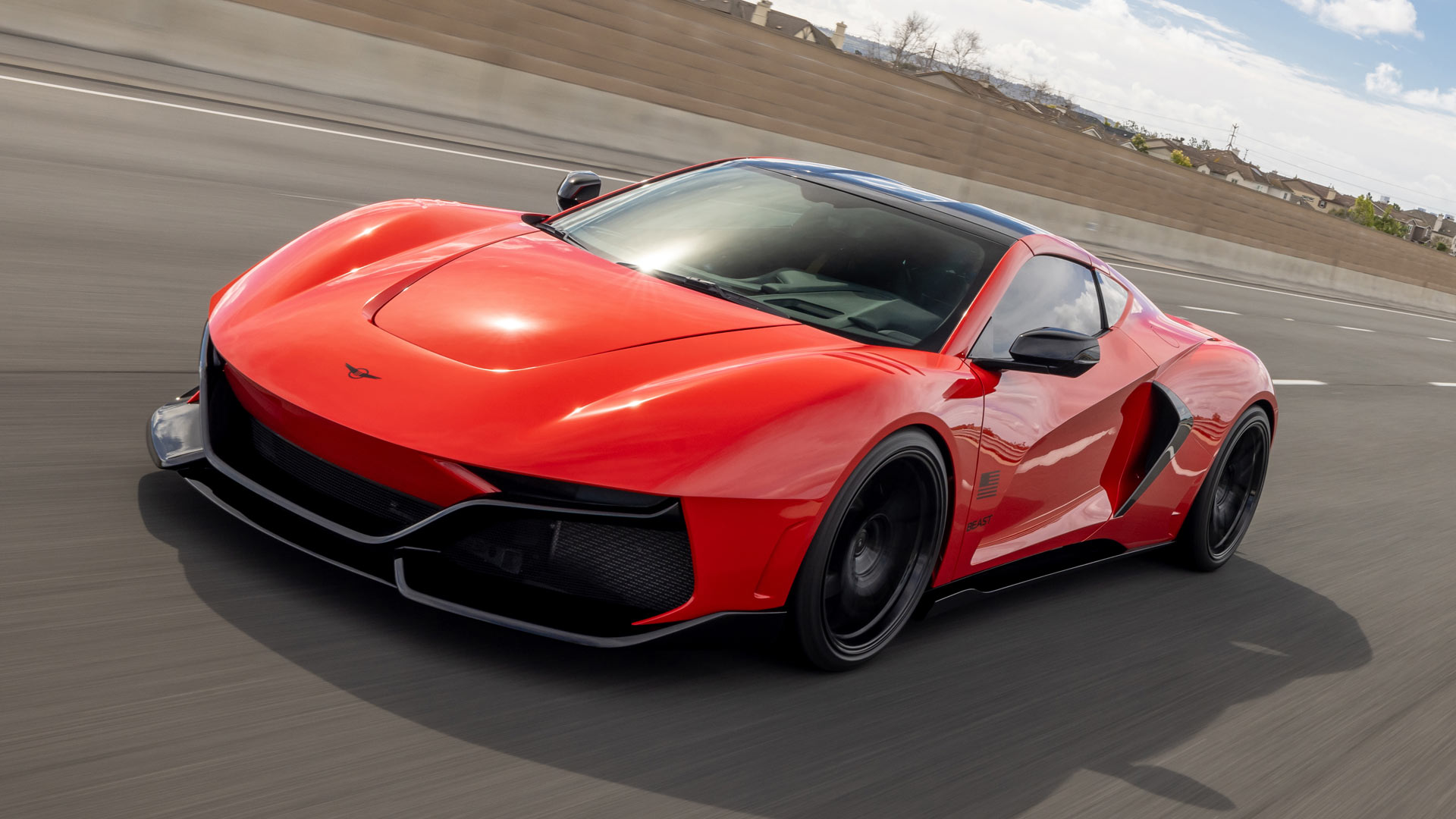
Marvelous mid-engined history
© HennesseyPicture an American performance car and you’ll probably imagine a classic muscle car with a large, front-mounted engine under the hood. Yet America has a strong history of producing mid-engined sports cars, too.
These include the 2024 Rezvani Beast, which promises to deliver 1,000 horsepower, along with the options of bulletproof glass and electromagnetic pulse protection.
Using the new Rezvani Beast as our inspiration, we have put together a history of mid-engined American cars.
-

The fight for the middle ground
© HennesseyThe incredible Hennessey Venom F5 hypercar has recently received a Red Dot Award for design. It has also topped over 270mph in testing.
Using the Hennessey Venom F5 as our inspiration, we have tracked the history of mid-engined American cars.
To avoid uncertainty, we are concentrating on cars which use a rear mid-engine drivetrain, with the engine behind the passenger compartment but ahead of the rear wheels.
So-called ‘front mid-engine’ models don’t count, nor do vehicles with the engine positioned behind the rear wheels.
American sports cars have used all such configurations through the years, but it means you will not see the DMC DeLorean on this list.
-
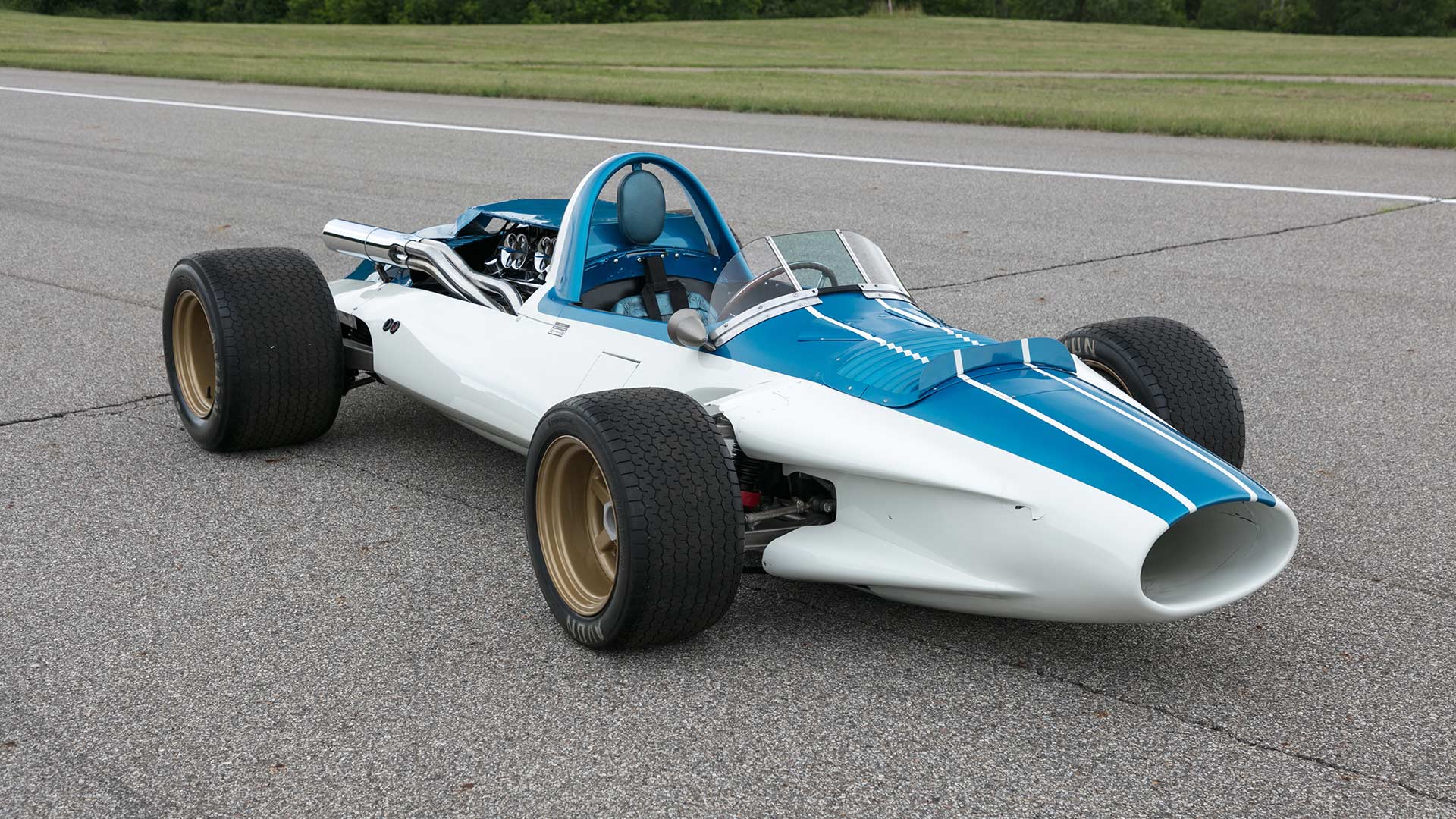
1959 Chevrolet CERV I Concept
© GMThe history of modern mid-engined American cars can be traced back to the Chevrolet Corvette. Famed Corvette engineer and designer Zora Arkus-Duntov experimented with a mid-engined machine in 1959, known as the Chevrolet Engineering Research Vehicle.
A keen racing driver, Arkus-Duntov used CERV I to experiment with engine options for the Corvette. This included an aluminum 283-cubic inch V-8, which developed 350 horsepower. The mid-engined layout was used for its optimum weight distribution and handling characteristics.
-
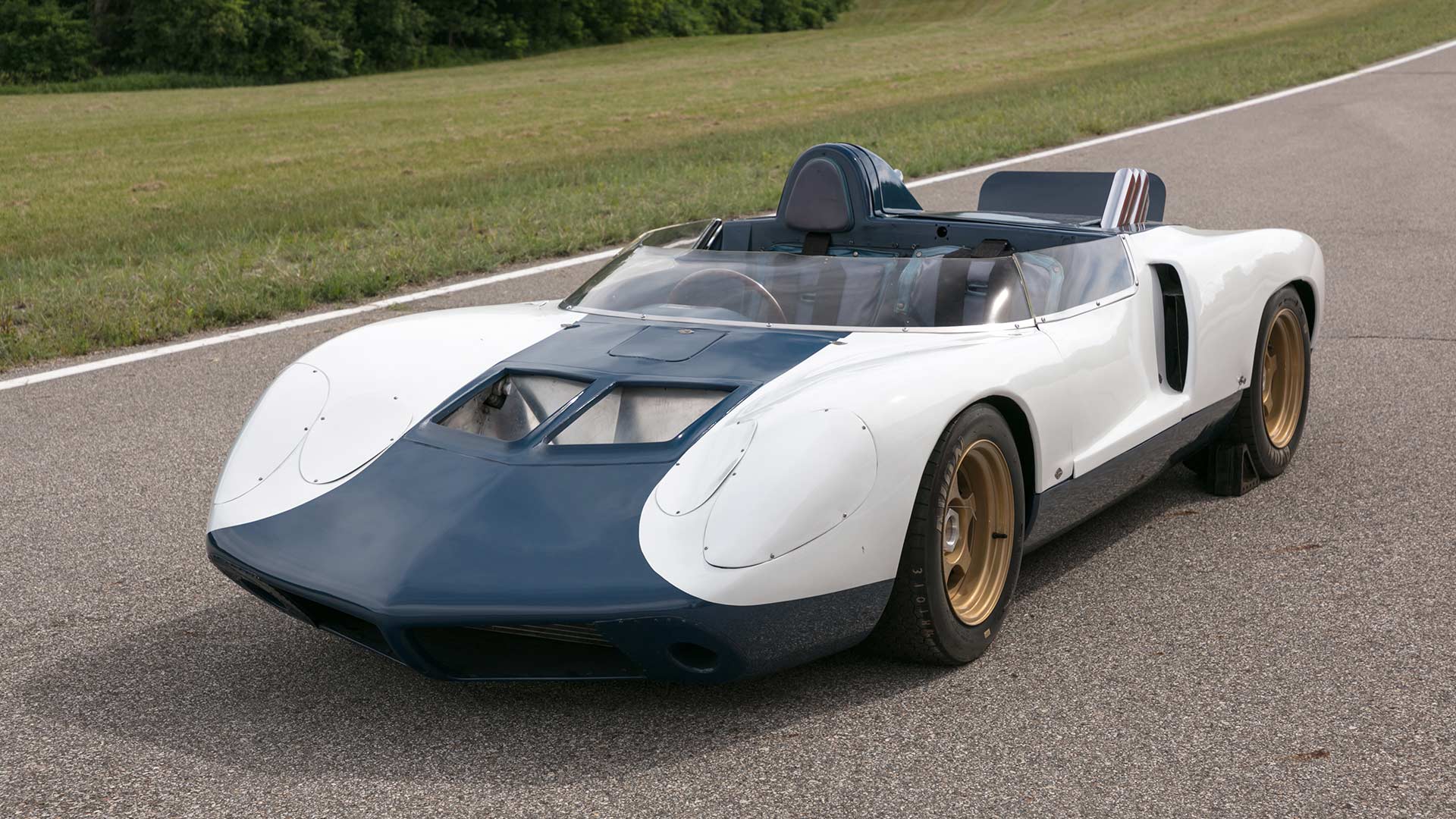
1964 Chevrolet CERV II Concept
© GMArkus-Duntov had identified that, in the short term at least, a mid-engined Corvette could have serious motorsport potential. In 1964 he worked with Chevrolet General Manager Semon “Bunkie” Knudsen to create CERV II as a possible entrant for the Sebring 12 Hours race.
The monocoque chassis featured a 500 horsepower 377-cubic inch V-8, linked by torque converters to both front and rear axles. Arkus-Duntov had created the mid-engined four-wheel drive sports car – something he would then patent. Plans to build actual racers never materialized, even with the potential for a top speed in excess of 210 mph.
-
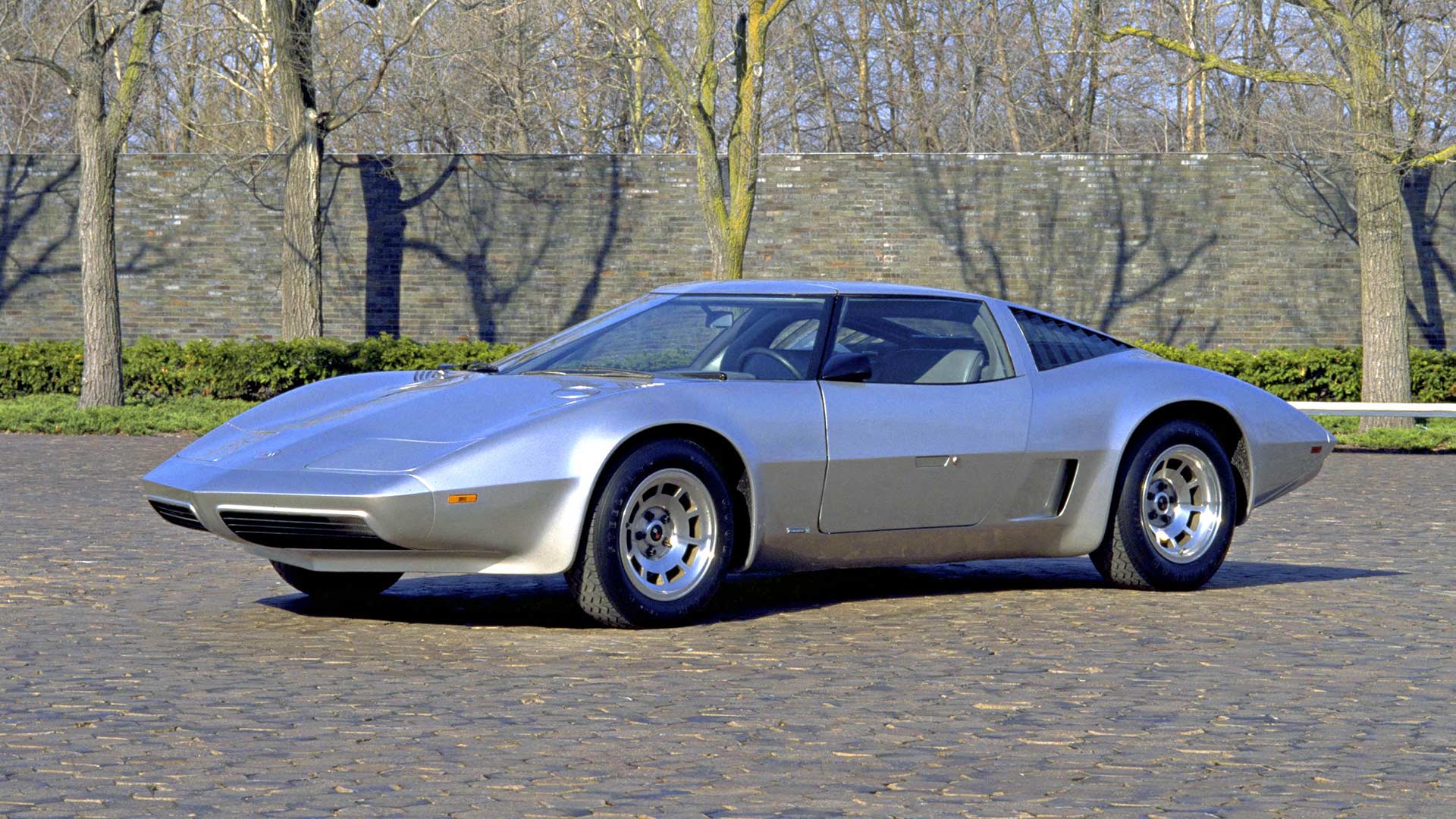
1976 Chevrolet Aerovette Concept
© GMThe key battle for Arkus-Duntov and other Chevrolet engineers was to attempt to prove that a mid-engined layout made sense for a production Corvette. A number of concepts were created throughout the 1970s, but the Aerovette became the closest to reality.
Initially powered by Chevrolet’s own four-rotor Wankel engine, the Aerovette idea was first dashed by oil embargoes and emissions regulations. A subsequent version with a V-8 engine came within touching distance of making it real, but GM got cold feet and shelved the idea.
-
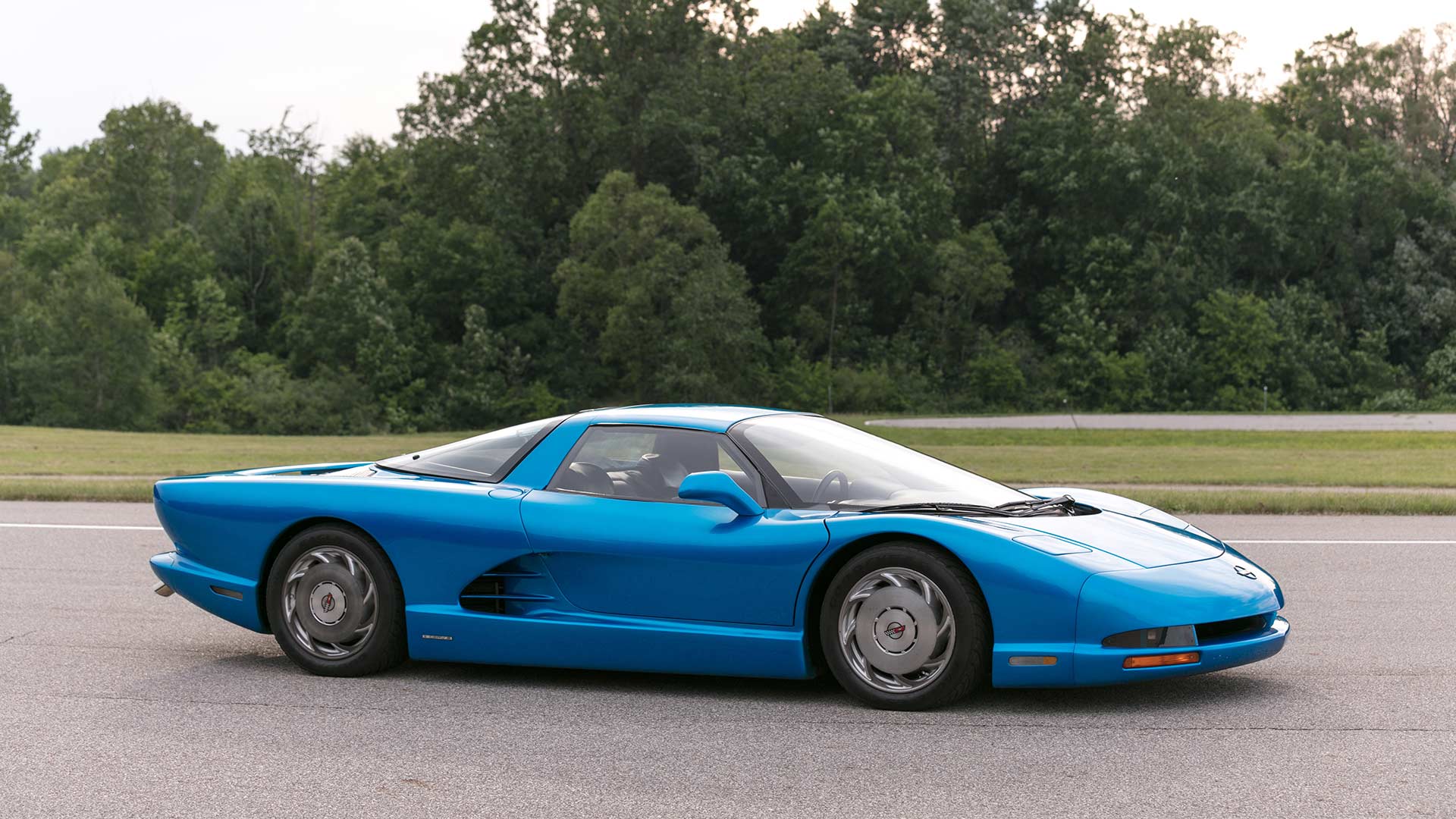
1990 Chevrolet CERV III Concept
© GMChevrolet’s most recent experimentation with mid-engined design came in the late 1980s, with the Corvette Indy concept displayed at the 1986 Detroit Auto Show. This subsequently evolved into the CERV III concept, built in collaboration with Lotus.
Unveiled in 1990, CERV III included high-tech features such as all-wheel drive and four-wheel steering. Power came from a turbocharged version of the 5.7-liter V-8 engine, producing an impressive 650 horsepower.
Exotic components like carbon fiber and titanium, plus the advanced technology, made CERV III too costly for GM to consider putting into production.
-
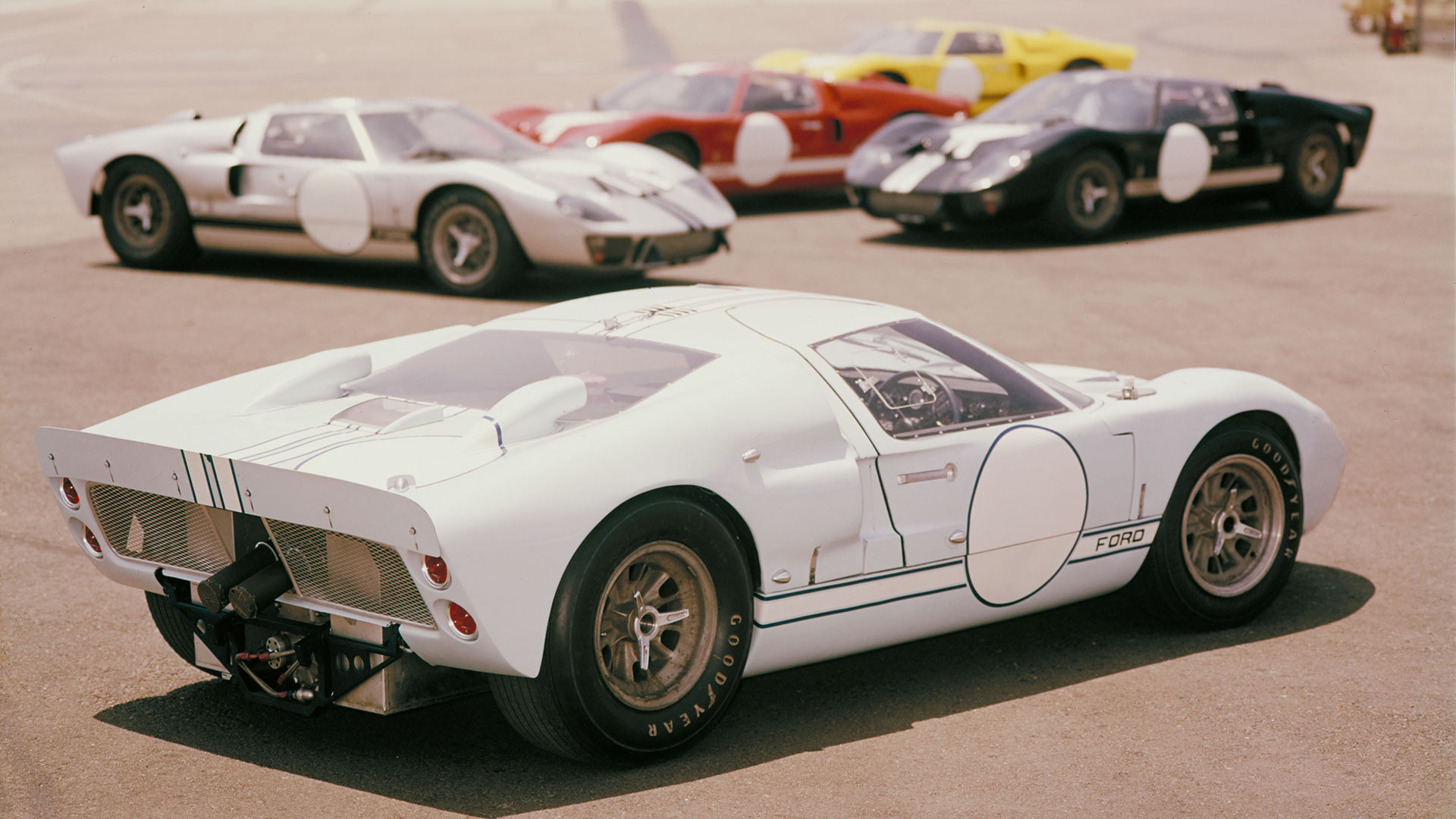
1966 Ford GT40 Mk II
© FordWhilst Chevrolet was experimenting with the idea of a mid-engined Corvette, Ford was busy using the drivetrain layout to dominate the Le Mans 24 Hour race. Versions of the GT40 would win the French event four times between 1966 and 1969, cementing its legendary status.
Early versions of the GT40 were built in the United Kingdom, using the Lola Mk6 as a base. Only the Mk IV version, used for two races in 1967, could claim to have been truly designed and manufactured in the United States. Notably, the Mk IV won both of the events it entered.
-
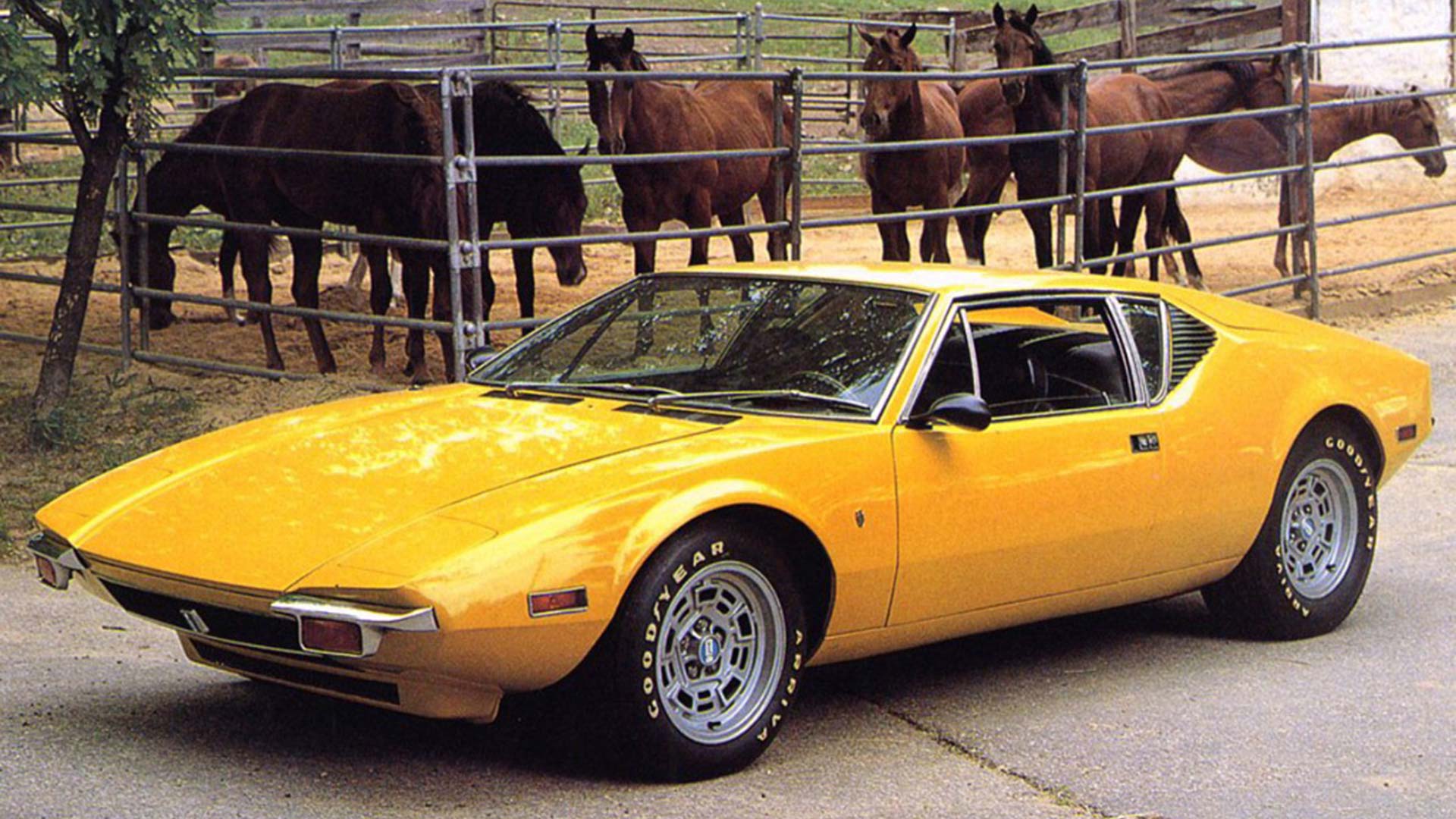
1971 De Tomaso Pantera
© De TomasoAnother mid-engined machine with a Ford link, the Pantera may have been born in Italy, but an agreement with the Blue Oval saw it sold in Lincoln Mercury dealerships in the USA. Key to this Italian-American relationship was the Ford 351-cubic inch Cleveland V-8, sending 326 horsepower to the real wheels.
After sales of 5,500 cars, Ford USA eventually stopped officially importing the Pantera in 1975. Yet Italian production of it continued all the way until 1992. American market cars are notable for their large black plastic front ‘safety’ bumpers.
-
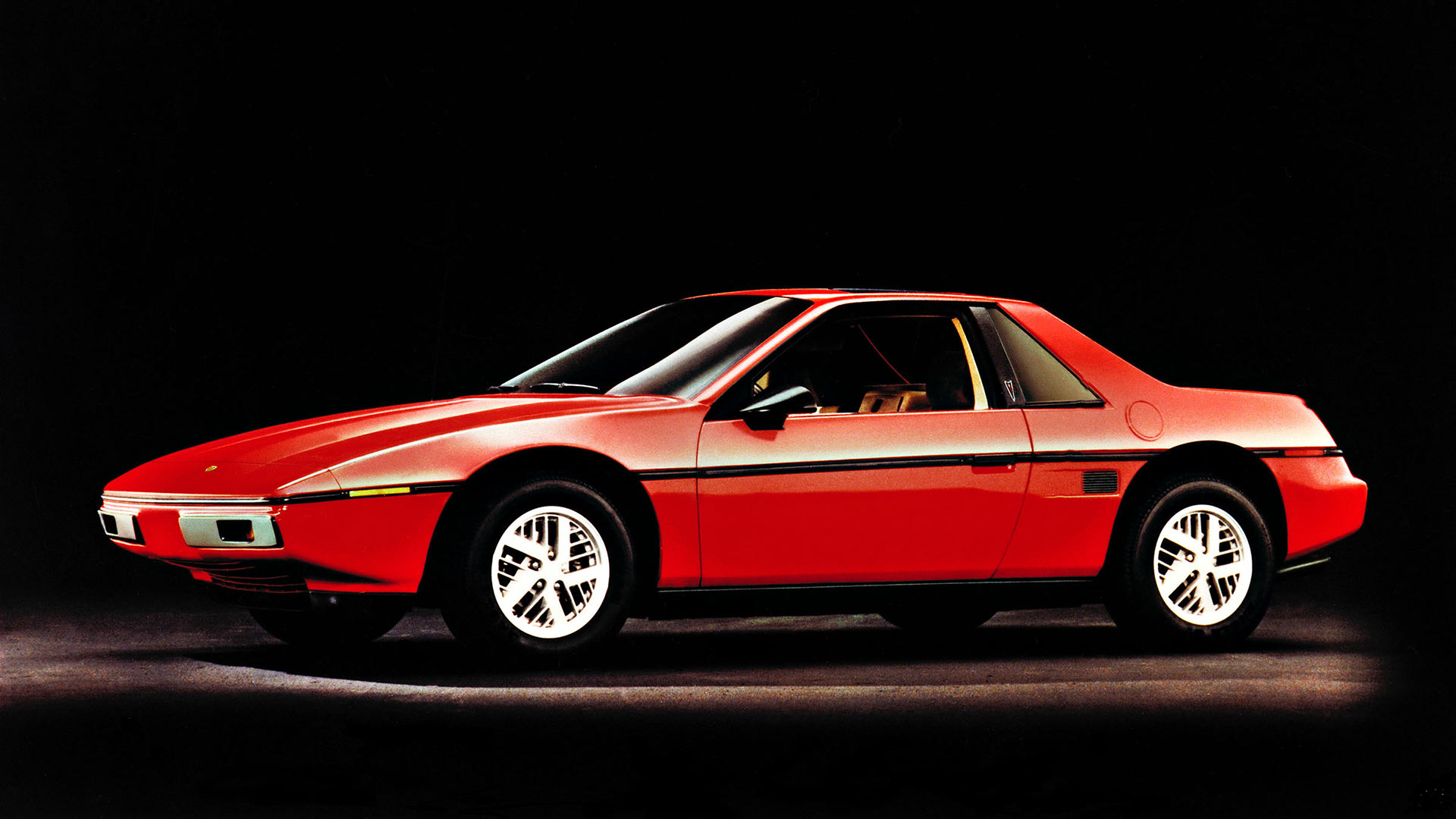
1984 Pontiac Fiero
© GMDespite the intense use of mid-engined designs in motorsport, American road cars with the layout remained few and far between. The Pontiac Fiero, launched for the 1984 model year, would become one of the first mid-engined mass-market offerings in the USA.
More than 370,000 examples were built in five years, with Pontiac making a major marketing push. The Fiero acted as the pace car for the 1984 Indianapolis 500, and also sponsored a tour by pop rock duo Hall & Oates.
After years serving as a base for countless kit car conversions, the Fiero is now establishing a cult following amongst collectors.
-
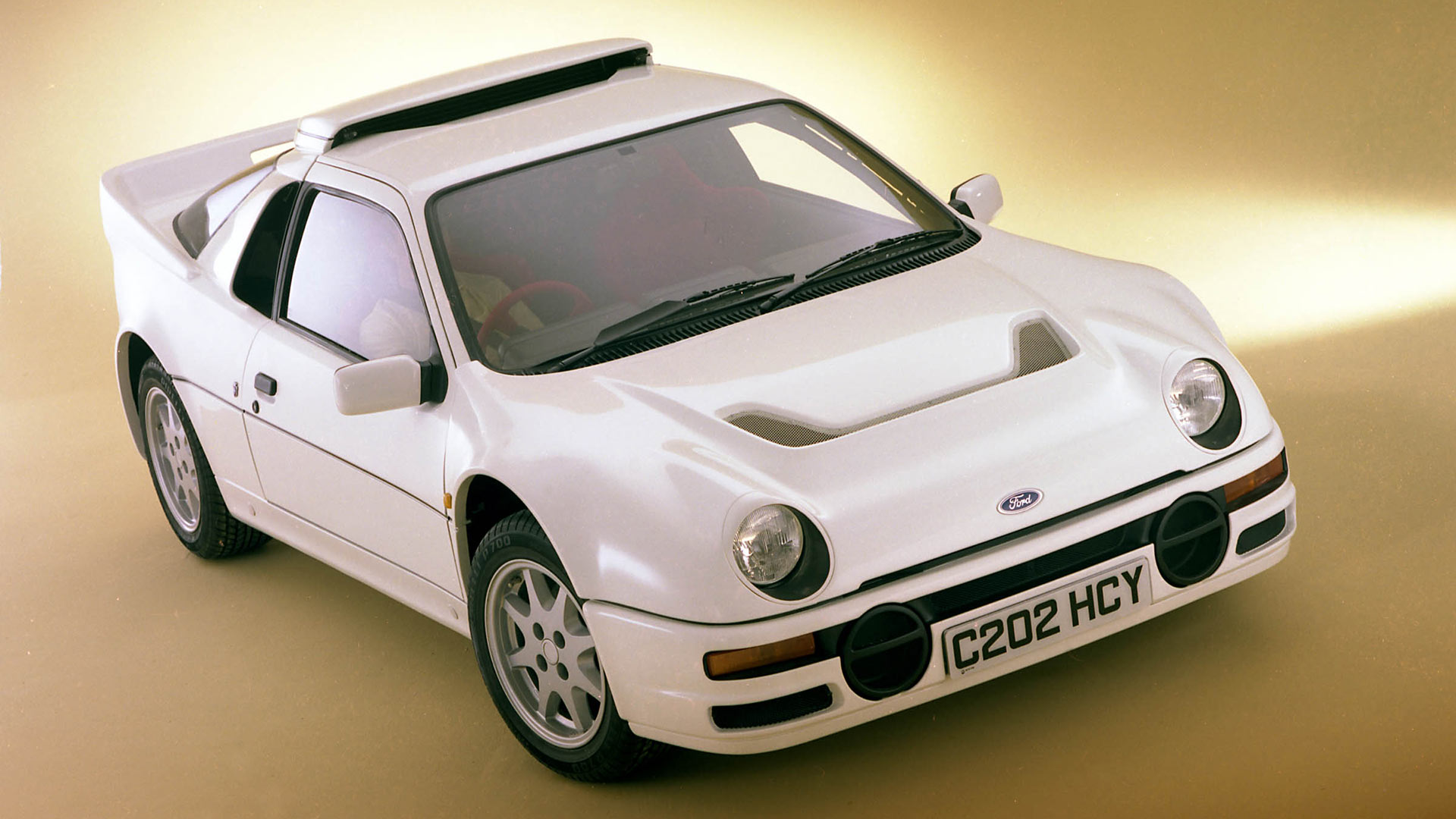
1985 Ford RS200
© FordTechnically the RS200 was produced by Ford Europe, but it is too significant to ignore. Developed for competition in Group B rallying, Ford used a mid-engined four-wheel drive layout for maximum performance. Power from the turbocharged four-cylinder engine could exceed 800 horsepower in certain tunes, making the RS200 a fearsome machine.
A fatal accident on the 1986 Rally de Portugal involving an RS200 would trigger a chain reaction, resulting in the end of Group B by 1987. Ford produced 200 road-going examples of the RS200 to homologate it for rallying, with these cars now highly sought after.
-
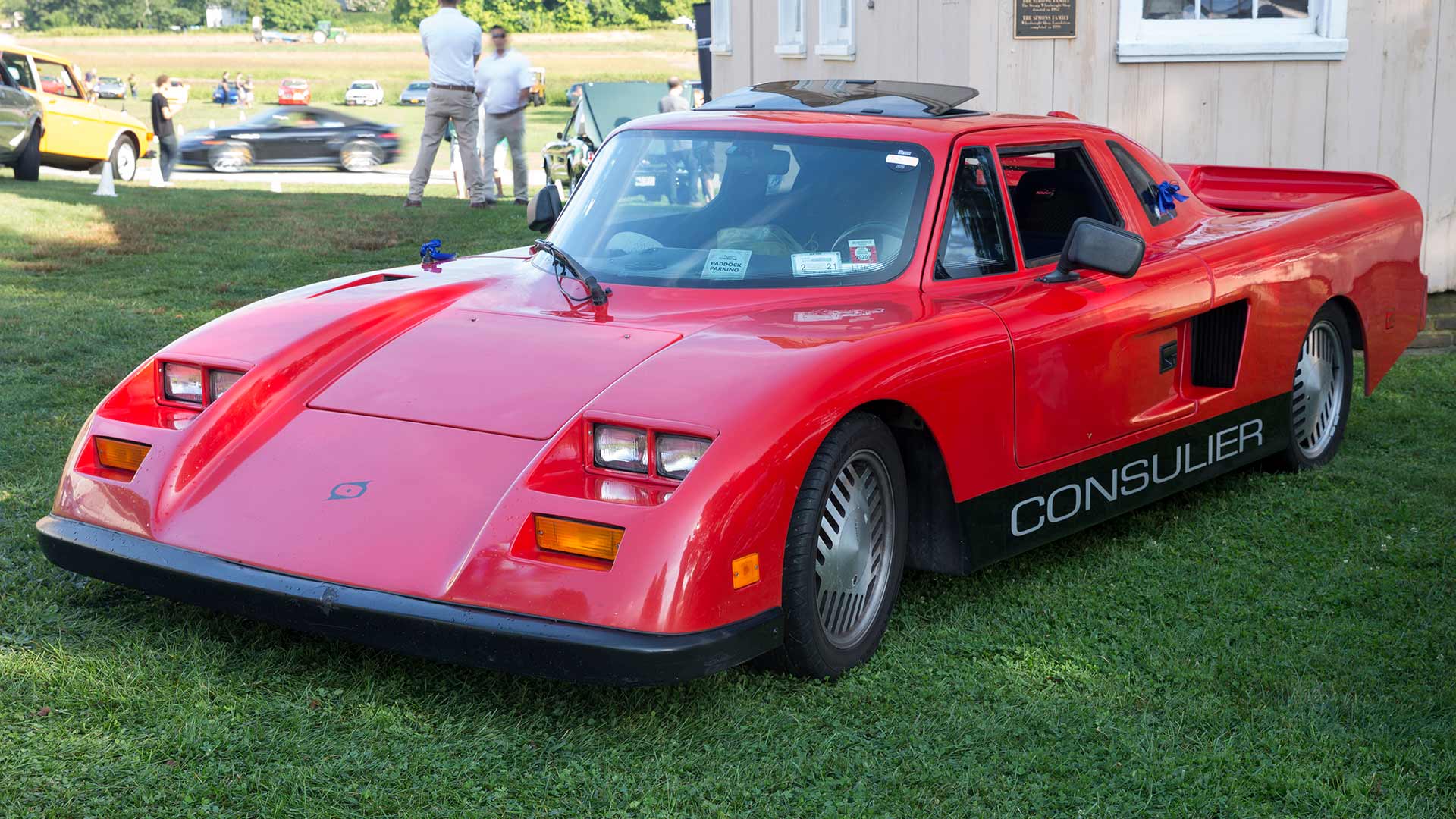
1985 Consulier GTP
© Wikipedia - Mr ChoppersCreated by American economist and engineer Warren Mosler, the Consulier GTP was a low-volume mid-engined sports car. Powered by a Chrysler 2.2-liter turbocharged four-cylinder engine, the GTP used a lightweight chassis constructed from fiberglass and foam. Carbon fiber and kevlar were also used for the exterior panels.
A high power-to-weight ratio made the GTP hugely effective in IMSA racing, leading to the car eventually being banned from competition. Warren Mosler also famously offered $25,000 to anyone who could beat a road-going GTP around a race track.
-
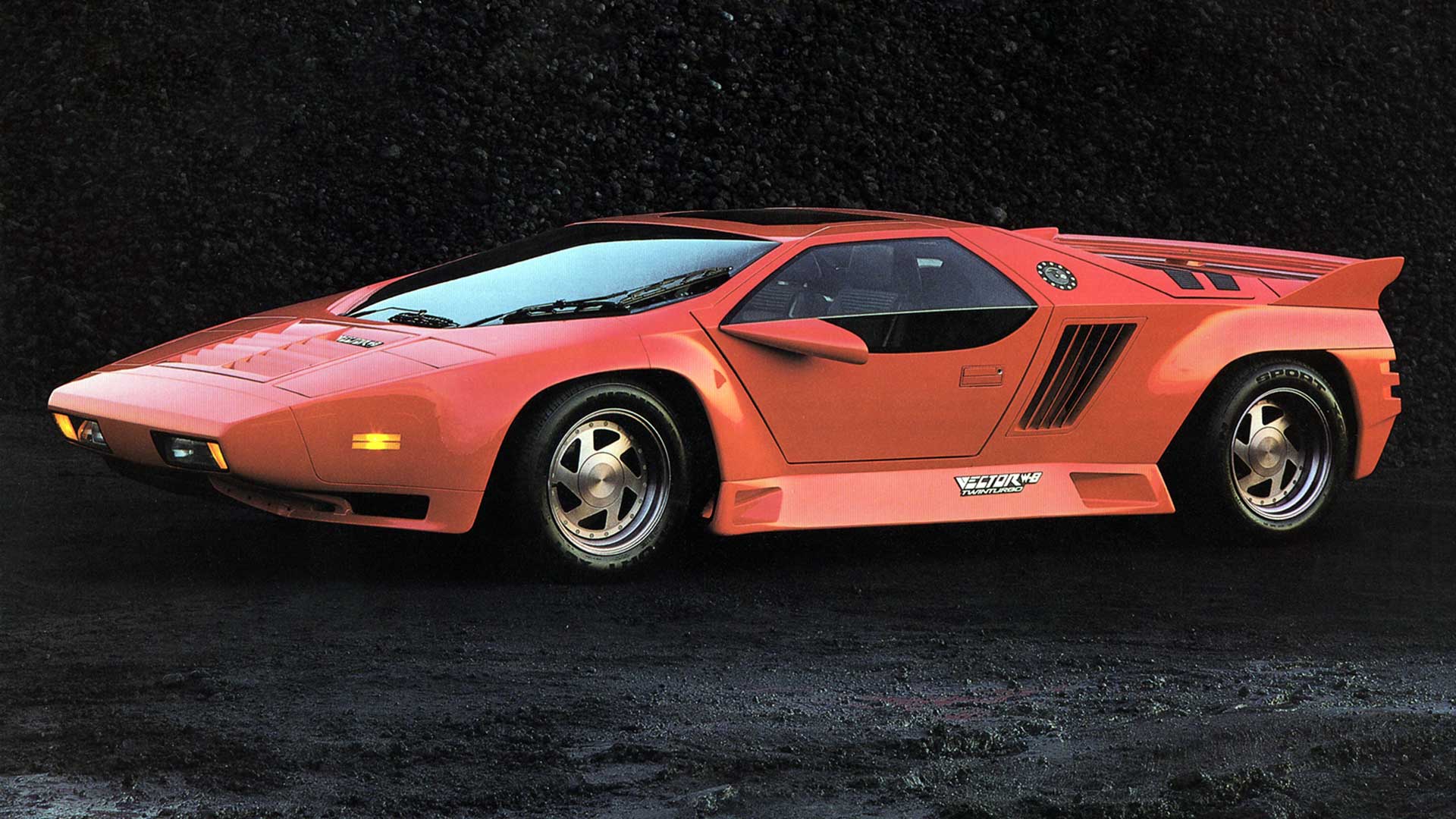
1989 Vector W8
© VectorAfter a decade of development, Gerald Wiegert brought his first production car to the world in 1989. Branded the Vector W8, a mid-mounted twin-turbocharged V-8 engine with a claimed 625 horsepower lived beneath the futuristic carbon fiber bodywork.
A potential top speed of 240 mph generated interest, with tennis superstar Andre Agassi one of the earliest customers. Agassi later returned his W8, due to the rear interior carpeting catching fire from the hot exhausts. Fewer than 20 production examples would be built, before Wiegert moved on to a new version of his mid-engined dream.
-
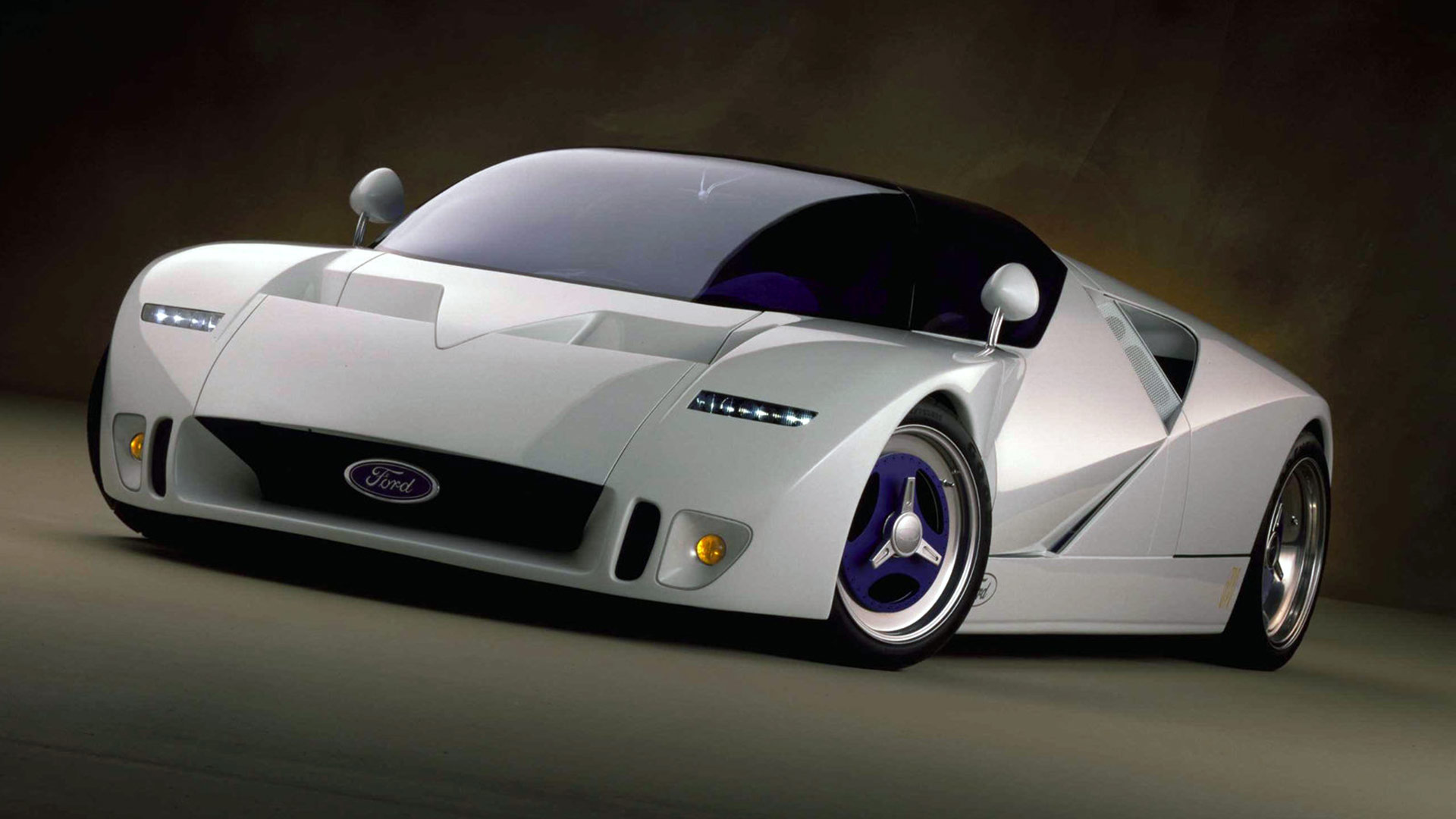
1995 Ford GT90 Concept
© FordPioneering the ‘New Edge’ design language which would dictate Ford’s product range for a decade, the GT90 made a dramatic debut at the 1995 Detroit Auto Show. Intended to be a spiritual successor to the GT40, a quad-turbocharged 6.0-liter V-12 made an estimated 720 horsepower, with a claimed top speed in excess of 250 mph.
Although initial ideas suggested the mid-engined GT90 could become a production car, by the end of 1995 it became clear this was very much just a pipe dream. The GT90 did at least feature in a number of video games, allowing fans to experience it virtually.
-
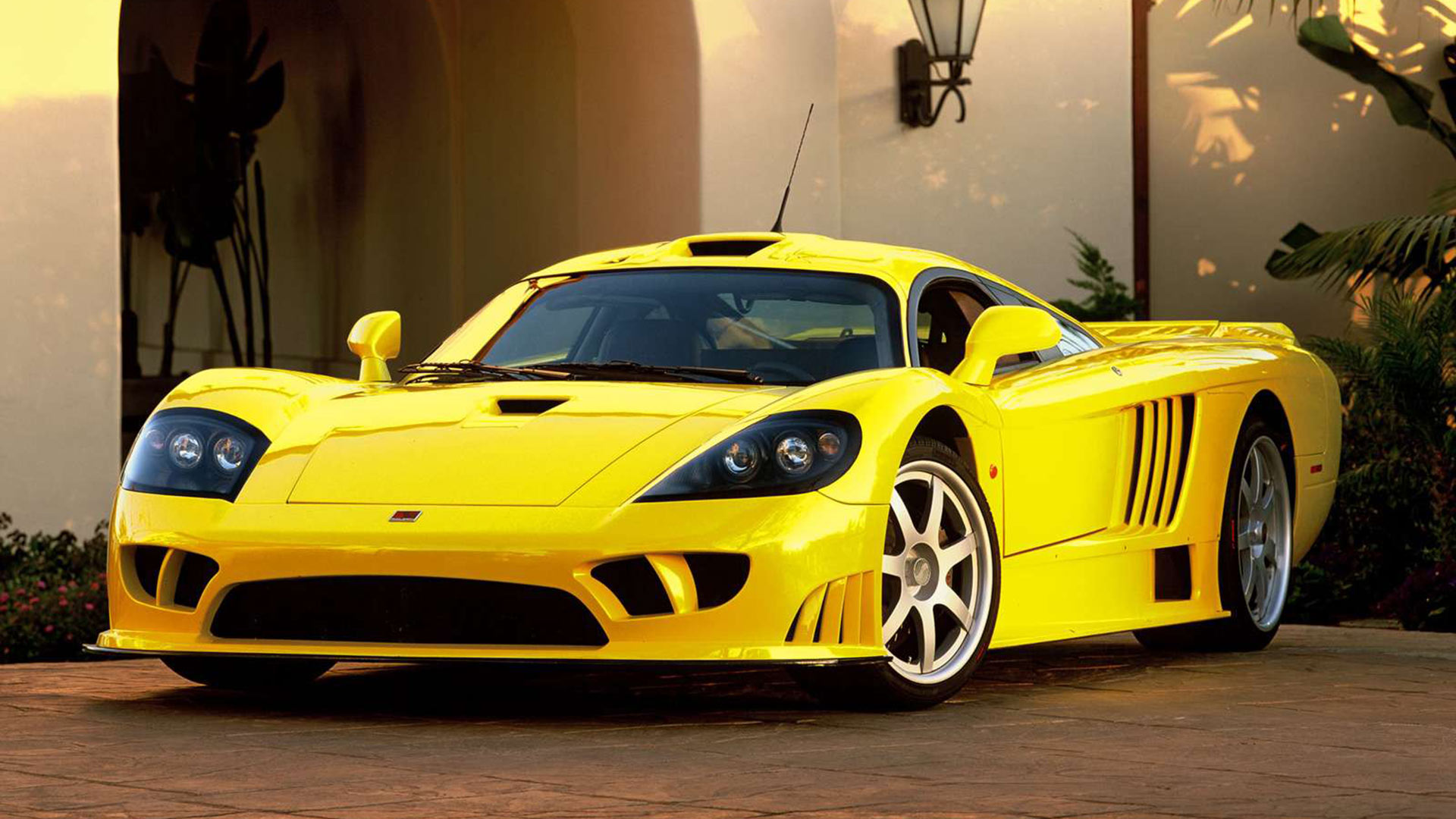
2000 Saleen S7
© SaleenSteve Saleen had developed a reputation for modifying Fords throughout the 1980s and ‘90s, but by the 2000 decided to launch his own bespoke creation. Made entirely from carbon fiber, the Saleen S7 owed more to race car construction than it did regular road-going vehicles.
Early S7s used a Ford Windsor 426-cubic inch V-8 engine, with later cars featuring a twin-turbocharged version with 750 horsepower. These Twin-Turbo models were claimed to be capable of almost 250 mph.
Specially built S7-R race cars would also compete across the globe, taking multiple class victories in endurance racing.
-
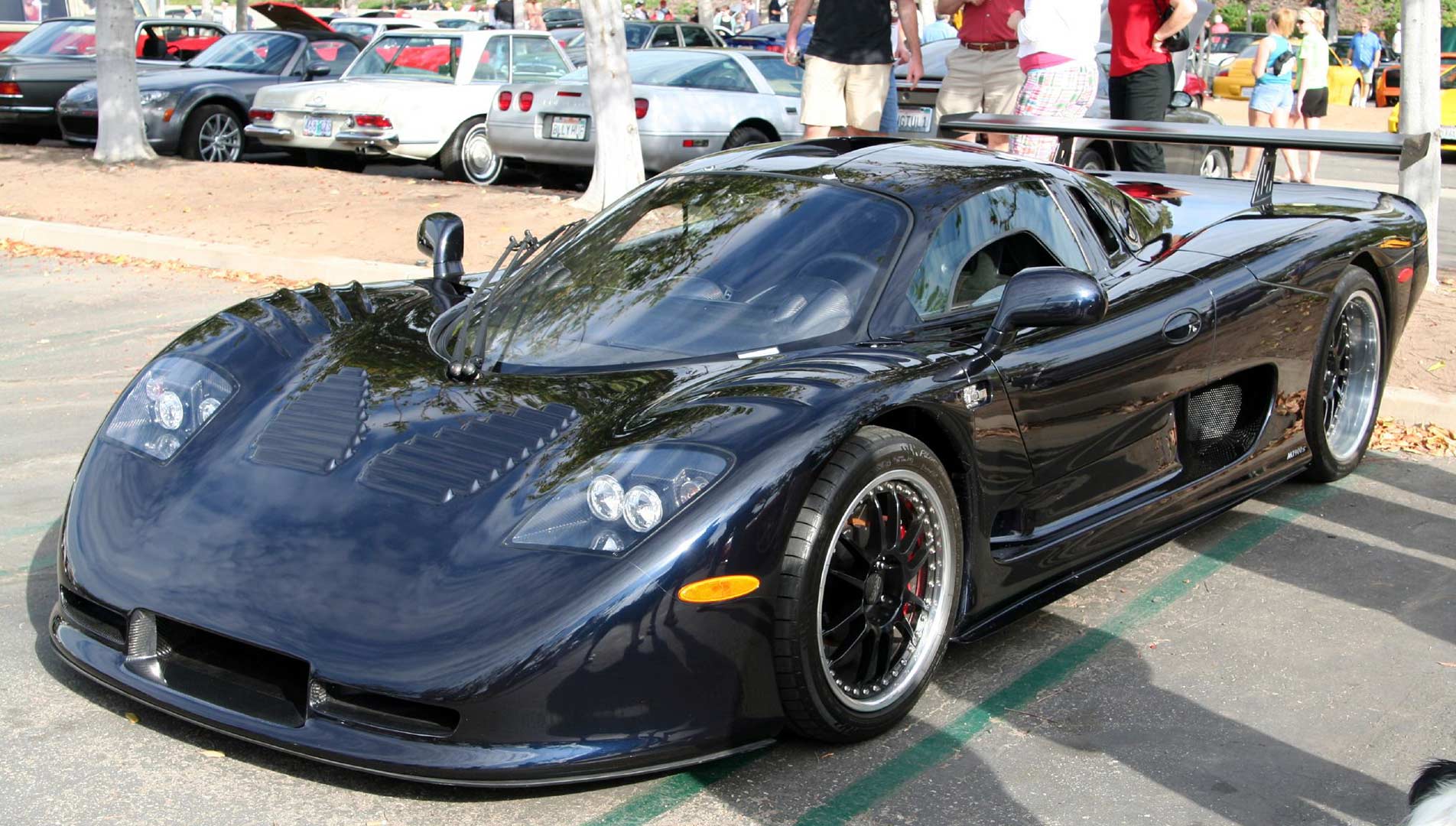
2001 Mosler MT900
© Wikimedia – J QWarren Mosler renamed his sports car company, and continued to work on his designs throughout the 1990s, resulting in the 2001 Mosler MT900. A carbon fiber chassis used a mid-mounted Chevrolet LS1 V-8 engine, with just one prototype being built.
By 2003, Mosler would launch the MT900S, gaining a more powerful LS6 V-8 engine. George Lucas of Star Wars and Indiana Jones fame took delivery of the first road-legal MT900S, with around 20 examples made before production ceased in 2010.
-
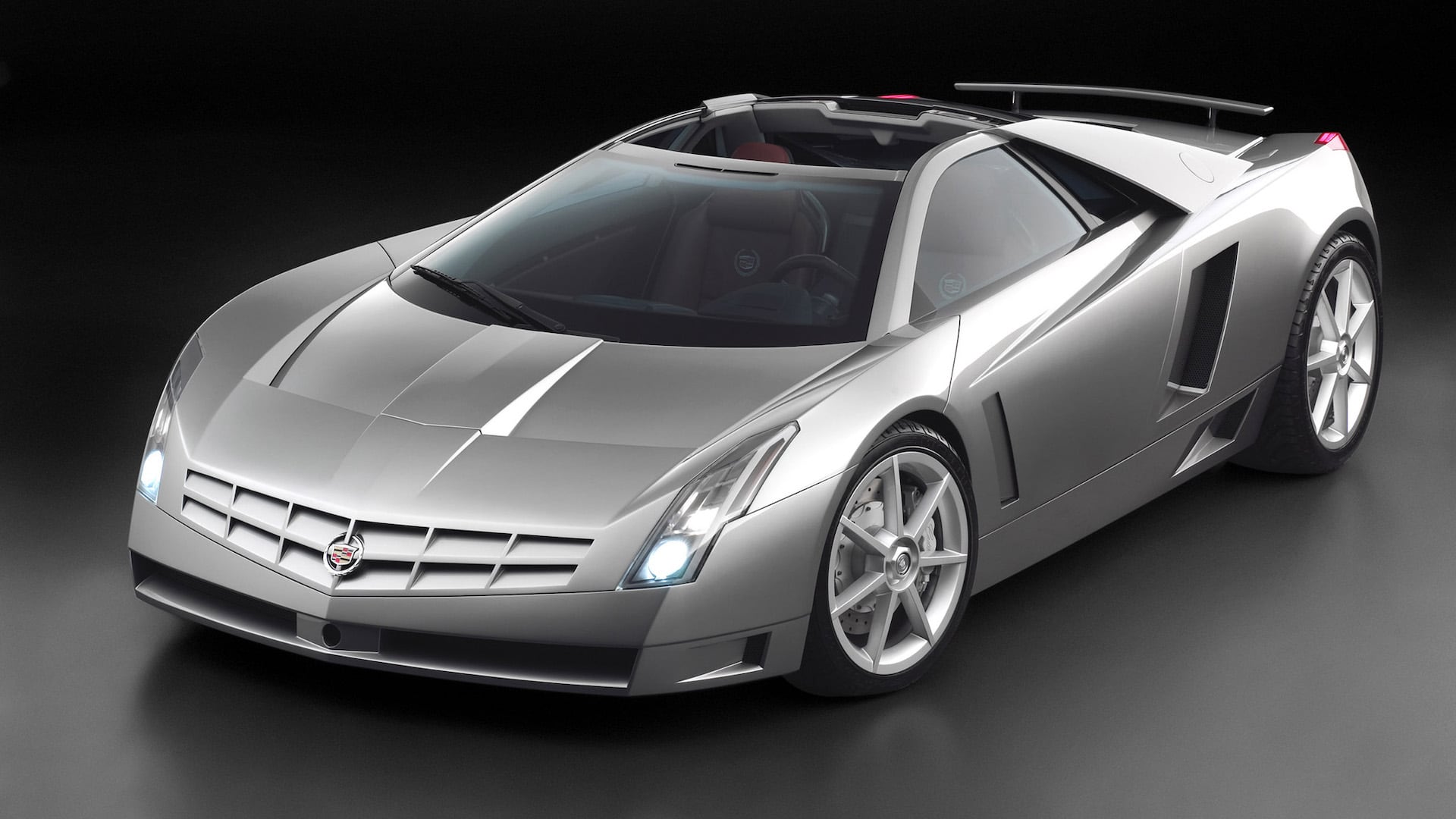
2002 Cadillac Cien Concept
© CadillacUnveiled at the 2002 Detroit Auto Show, the Cien concept was intended to celebrate Cadillac’s 100th anniversary. Styled by Simon Cox, the Cien made use of Cadillac’s edgy “art and science” design language.
Mounted in the middle was a 7.5-liter V-12 engine, derived from the Northstar V-8. With 750 horsepower and 650 lb-ft of torque, it would have given the Cien serious supercar performance. A six-speed paddle shift transmission was included for good measure, too.
Although the Cien wowed crowds in Detroit, it remained firmly as a concept.
-
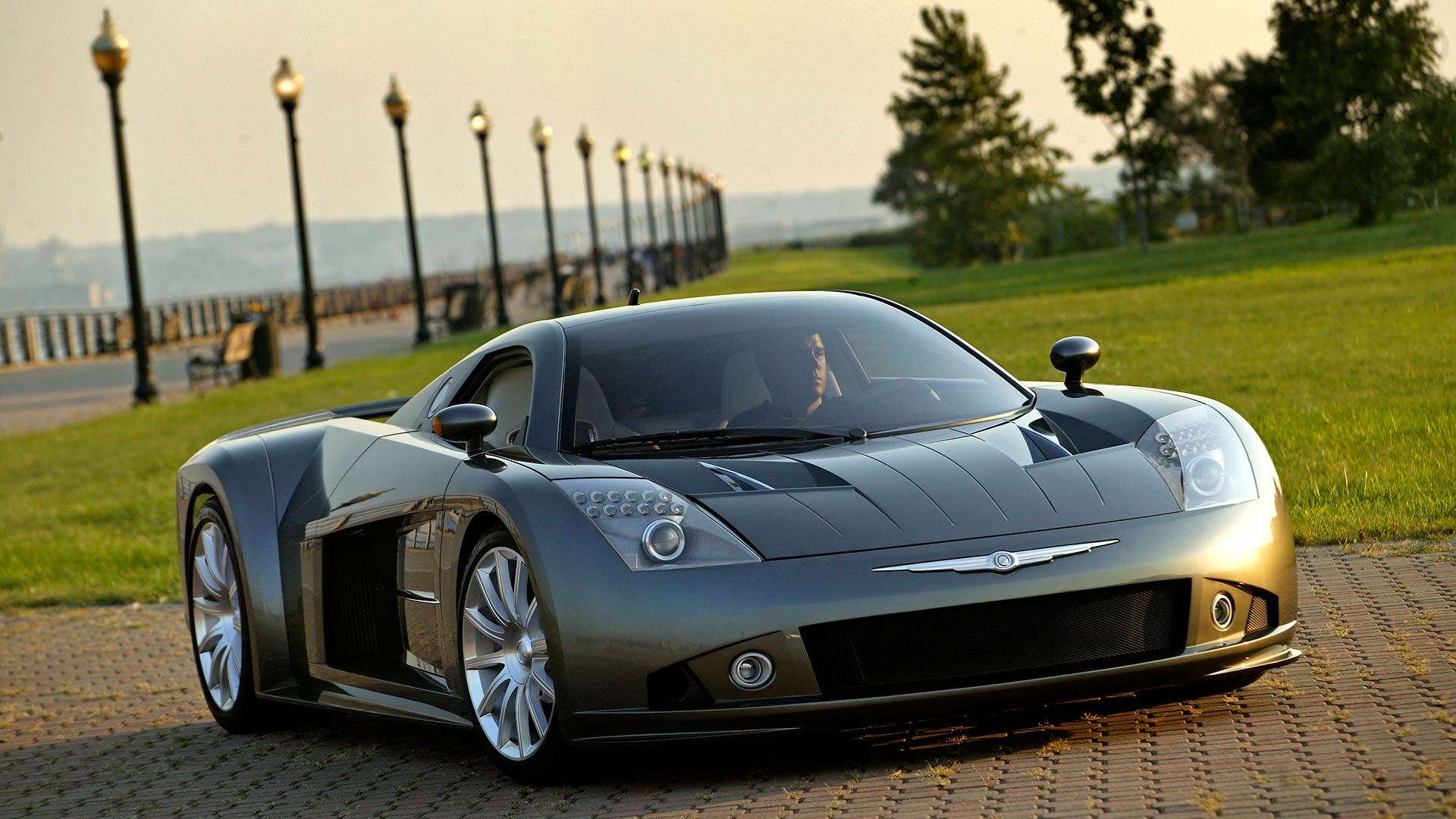
2004 Chrysler ME Four Twelve Concept
© ChryslerThe DaimlerChrysler era saw a wealth of exciting Mopar concepts, but the ME Four-Twelve was an example of Detroit going rogue in the pursuit of performance. A Mercedes-Benz 6.0-liter V-12 engine was mid-mounted, and fitted with four turbochargers, to offer a total of 850 horsepower. An eight-speed dual-clutch transmission was also developed to channel power to the rear wheels.
Created as a fully working prototype in just eighteen months, the ME Four-Twelve was capable of 240 mph and running from 0-100 mph in 6.2 seconds. Mercedes-Benz executives were said to be outraged at Chrysler producing something which would challenge their flagship SLR supercar, causing the ME Four-Twelve to be binned.
-
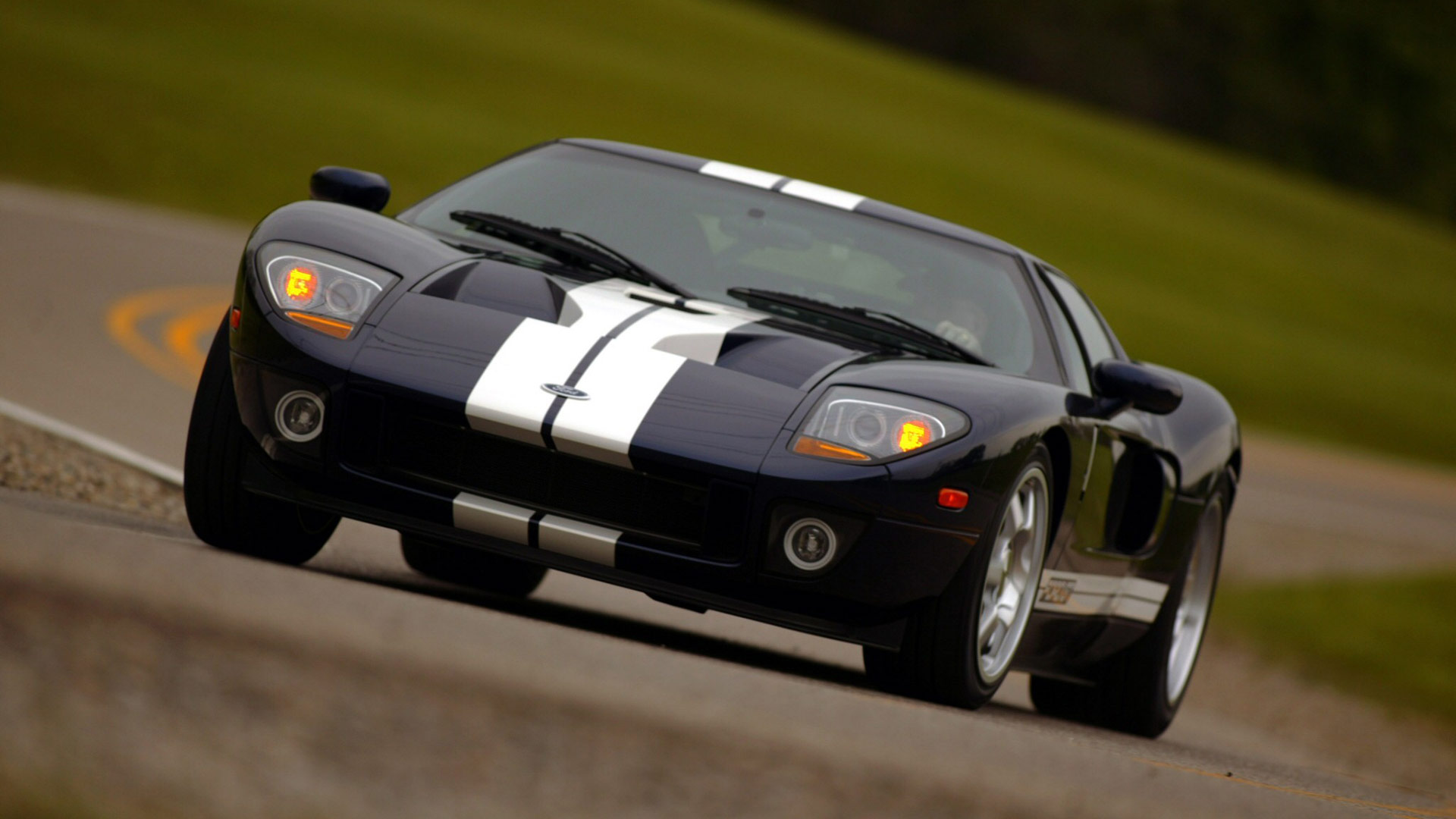
2005 Ford GT
© FordAfter appearing as a concept car for the 2002 Detroit Auto Show, Ford finally recreated the GT40 with the retro-inspired GT supercar in 2005. Bigger, wider and taller than the original, it still retained the classic features which defined the GT40, including a mid-mounted V-8 engine.
For 2005 this was a supercharged version of Ford’s Modular 5.4-liter V-8 engine producing 550 horsepower with 500 lb-ft of torque. A six-speed manual transmission was standard for all, with a top speed of 205 mph. Just over 4,000 cars were produced in two model years, with Jeremy Clarkson one of the most famous GT owners.
-
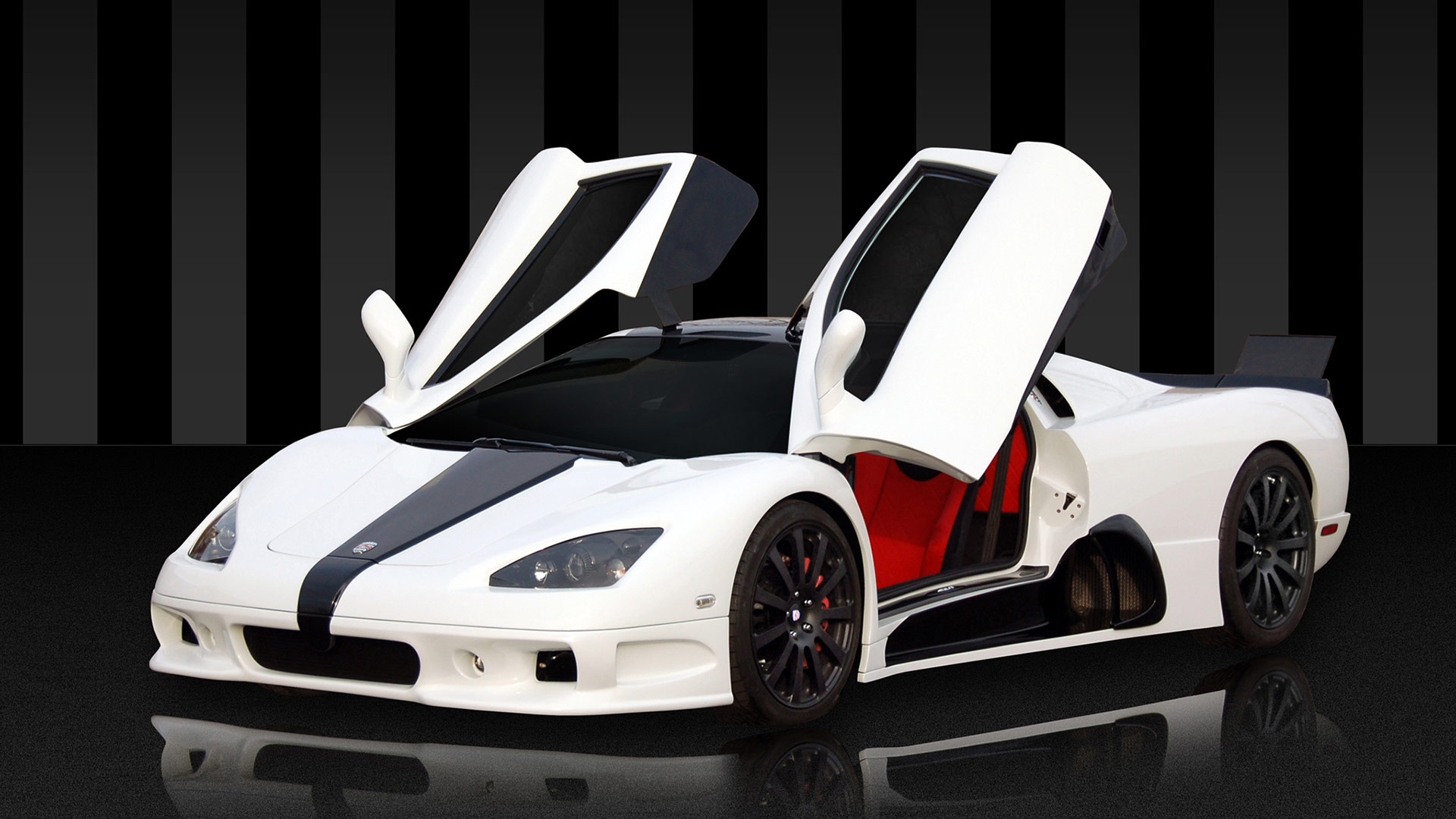
2006 SSC Ultimate Aero
© SSCJerod Shelby (unrelated to legendary engineer Caroll Shelby), set out to create the fastest car in the world from his base in Richland, WA. Shelby began designing his first hypercar in 1998, with the finished prototype for the Ultimate Aero revealed in 2004. Power came from a 782 horsepower supercharged Corvette V-8 engine, mounted in the middle.
Shelby continued to develop the Ultimate Aero, culminating in the Twin-Turbocharged version. A grand total of 1,183 horsepower propelled the Ultimate Aero TT to 256.14 mph in 2007, claiming the Guinness World Record for the fastest production car in the world.
Although the speed record would be beaten by the Bugatti Veyron Super Sport in 2010, SSC completed Ultimate Aero production with a final XT version. Peak power was an incredible 1,300 horsepower.
-
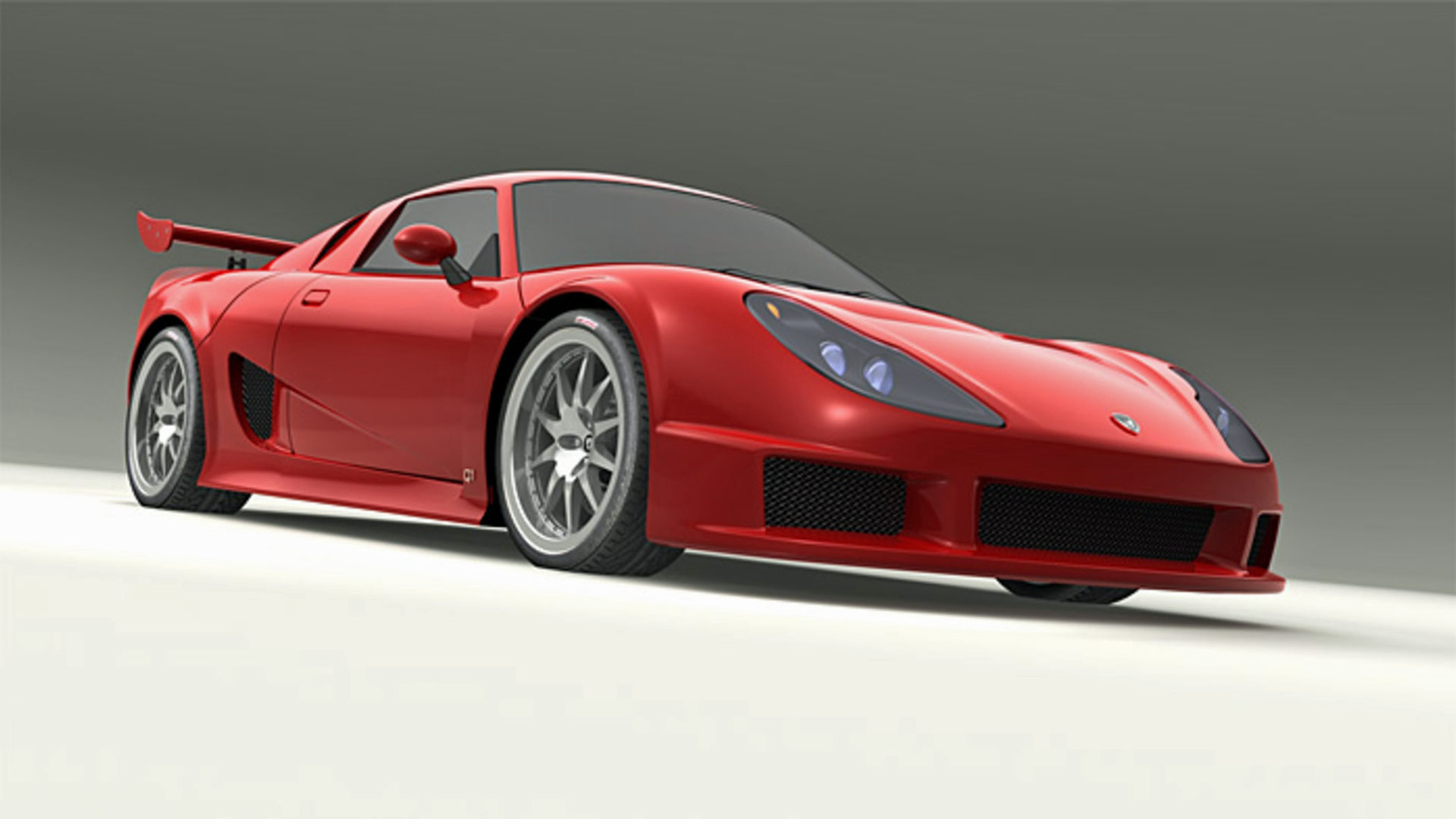
2008 Rossion Q1
© RossionRossion Automotive acquired the rights to the UK-made Noble M400 sports car in 2007. It planned to bring luxury and usability to the hardcore Noble, but also added extra performance. Carbon fiber was used for the bodywork, with redesigned aerodynamics to offer improved handling and top speed.
As with the Noble a mid-mounted twin-turbocharged 3.0-liter Ford V-6 provided the power, offering up 508 horsepower and 521 lb-ft of torque. This allowed for a 0-60 mph time of under 3 seconds, with a top speed of 195 mph.
Rossion merged with Mosler Automotive in 2013, with production of the Q1 ending in 2018.
-
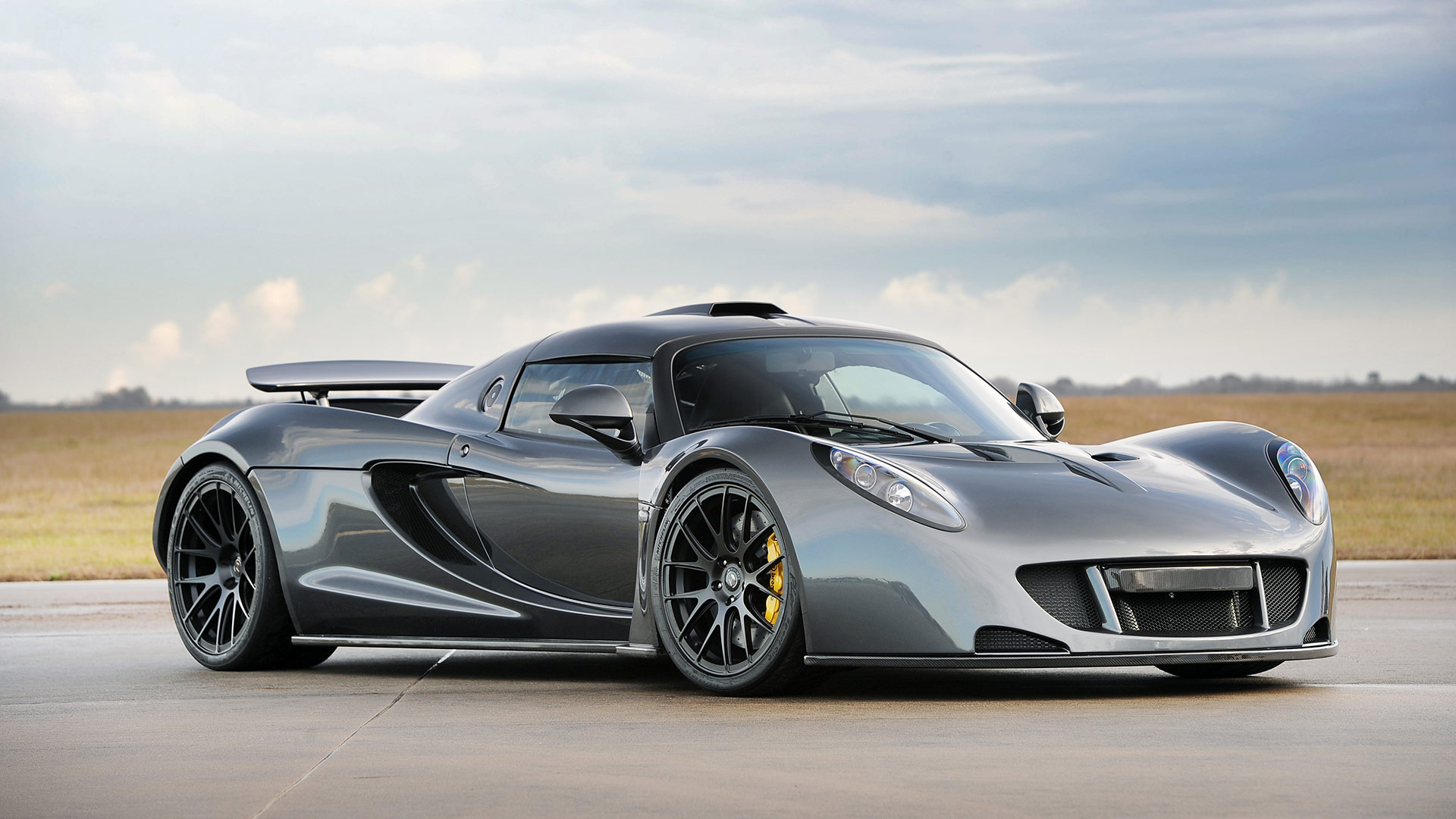
2011 Hennessey Venom GT
© HennesseyTexas-based tuner John Hennessey has a big reputation for extracting huge power from engines. The Venom GT, built on a modified Lotus Exige chassis, added a twin-turbocharged 7.0-liter GM LSX engine to the mix, with a potential for up to 1,450 horsepower.
Hennessey used the Venom GT to hit a peak speed of 270.49 mph in 2014, but was unable to register an official world record due to only running in one direction. However, the Venom GT was recognized by Guinness as the fastest accelerating car from 0-186 mph.
-
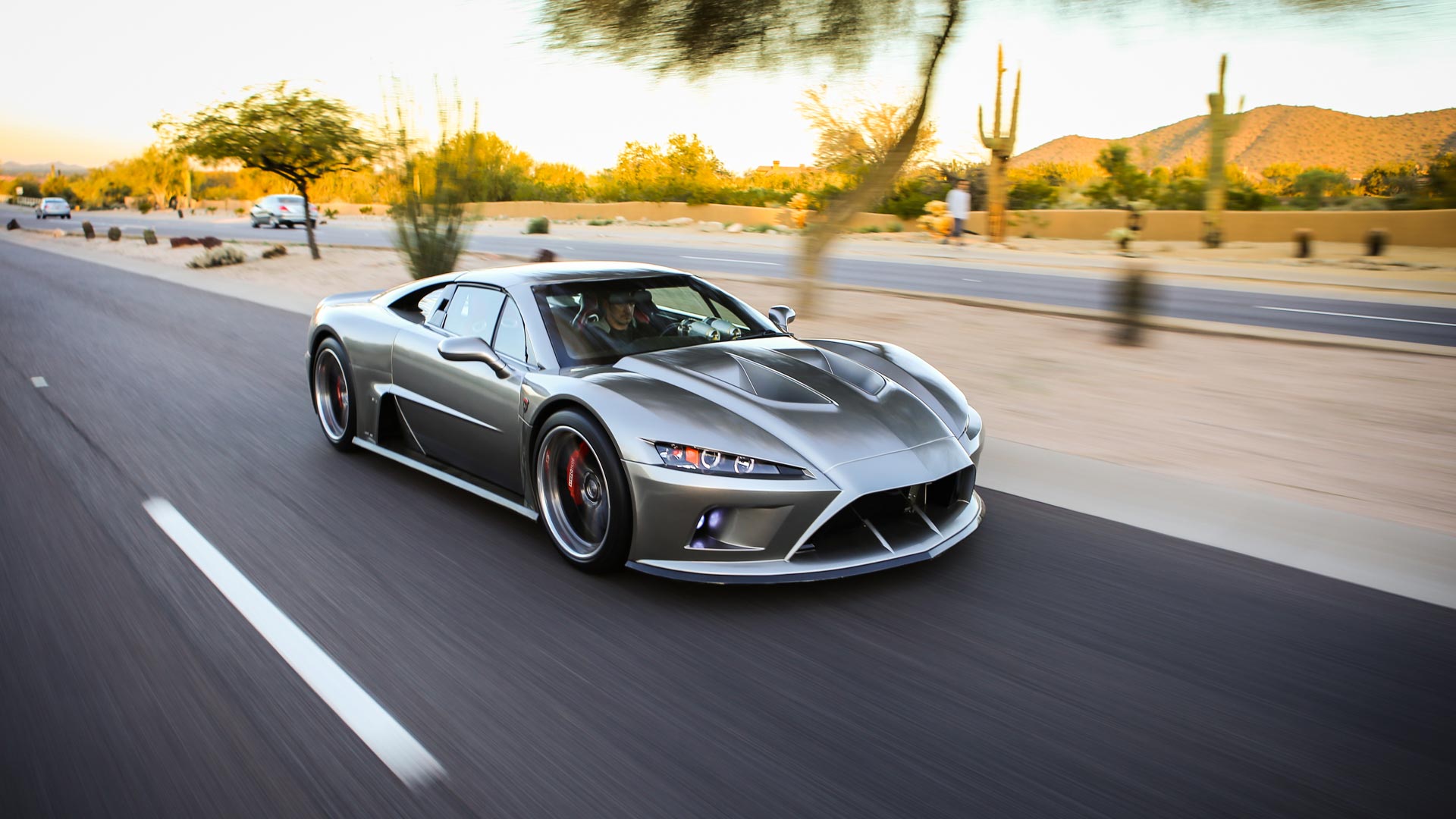
2012 Falcon F7
© Falcon MotorsportsFalcon Motorsports was founded in 2009, with a view to producing high-performance sports cars. The Michigan-based manufacturer displayed a prototype F7 at the 2010 Detroit Auto Show, and launched a production version for 2012.
The initial F7 used a 427-cubic inch LS7-derived V-8 engine, offering up 620 horsepower. However, Falcon added a Lingenfelter twin-turbo kit, pushing the total output to an impressive 1,100 horsepower.
Only seven examples of the F7 were produced, making them another rare mid-engined American special.
-
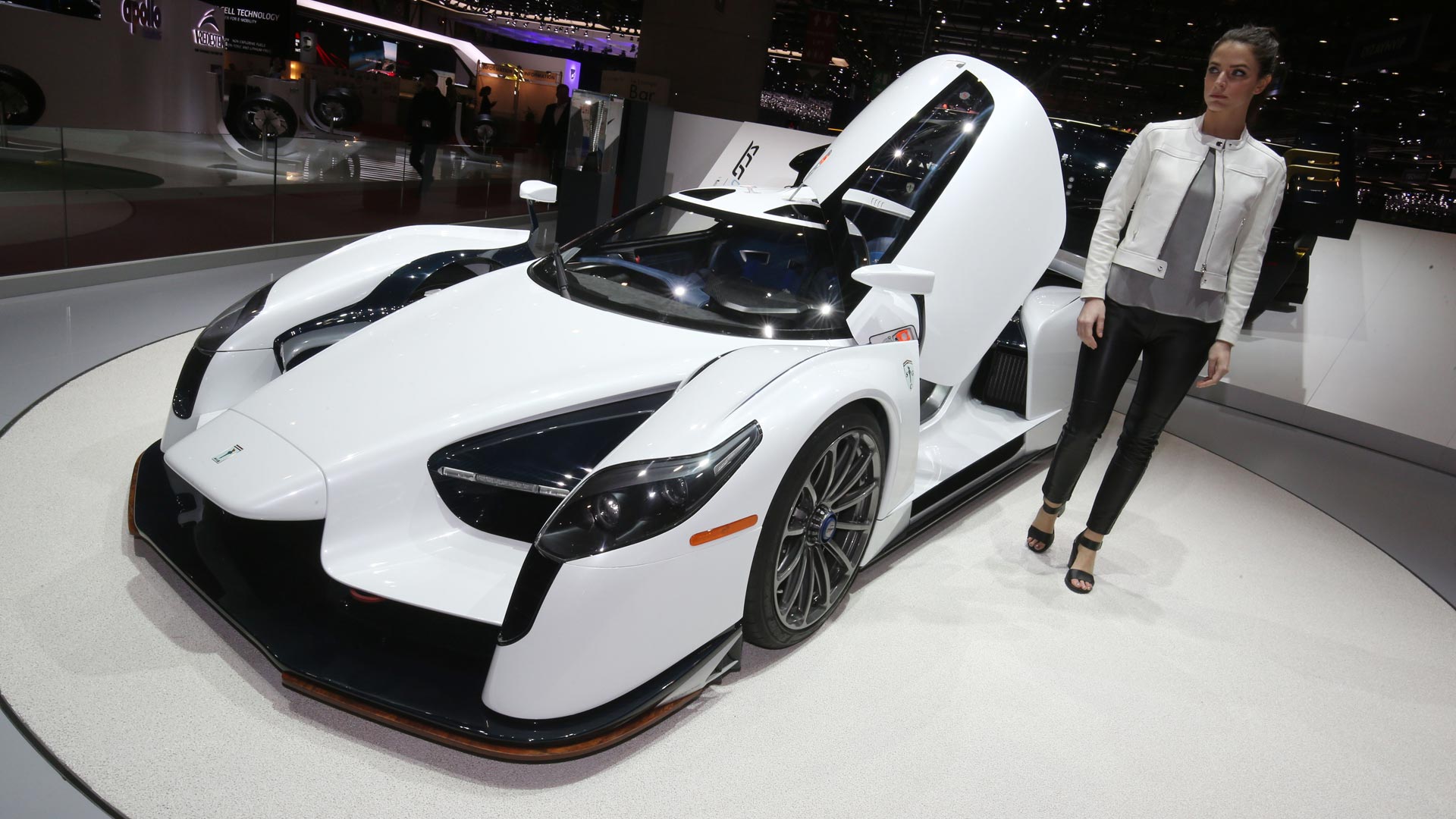
2015 Scuderia Cameron Glickenhaus SCG 003
© NewspressFilm producer and director James Glickenhaus created Scuderia Cameron Glickenhaus, focused on building race cars for the Nurburgring 24 Hours competition. This evolved into low-volume street car production, with the SCG 003S launched in 2015.
Assembled in Sleepy Hollow, NY, the SCG 003S uses a 4.4-liter BMW twin-turbocharged engine, producing 750 horsepower. This is mounted in a carbon fiber chassis, with a seven-speed dual-clutch transmission sending power to the rear wheels.
With the dramatic styling resulting in large amounts of downforce, the SCG 003S is still capable of a top speed in excess of 230 mph. Accelerating from 0-60 mph takes just 3 seconds.
-
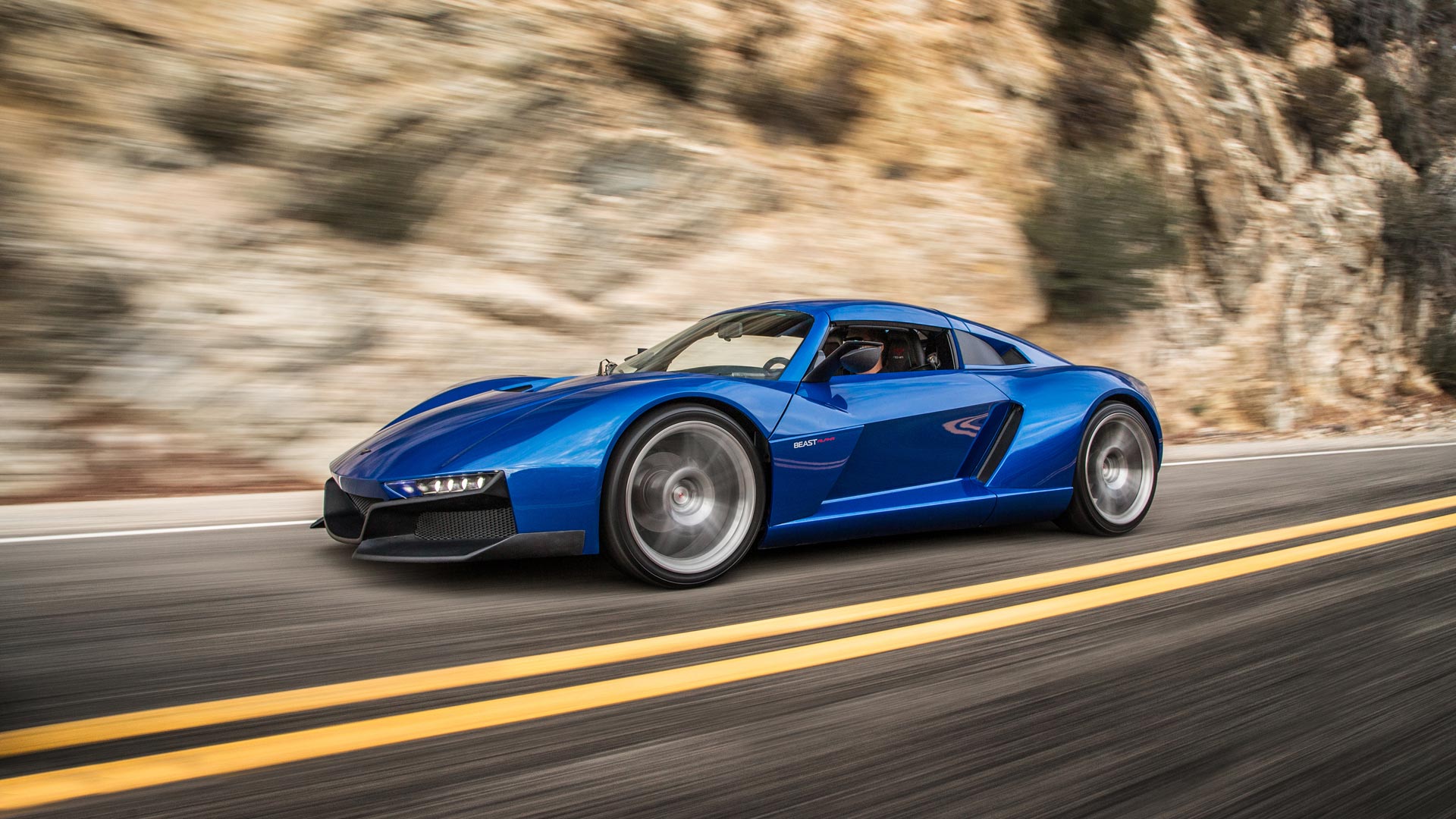
2015 Drakan Spyder
© DrakanDeveloped from a Palatov Motorsport kit by Sector111, the Drakan Spyder is an extreme lightweight sports car. Tipping the scales at just 2,000 lb, it is powered by a mid-mounted 6.2-liter GM LS3 V-8 engine.
With 430 horsepower available in such a featherweight car, performance is best described as exhilarating. The 0-60 mph dash takes 3.5 seconds, with the Spyder’s top speed a windy 165 mph.
Adjustable Fox Racing coilover suspension, Wilwood brakes, and Hella LED lighting are some of the additional highlights of the Drakan.
-
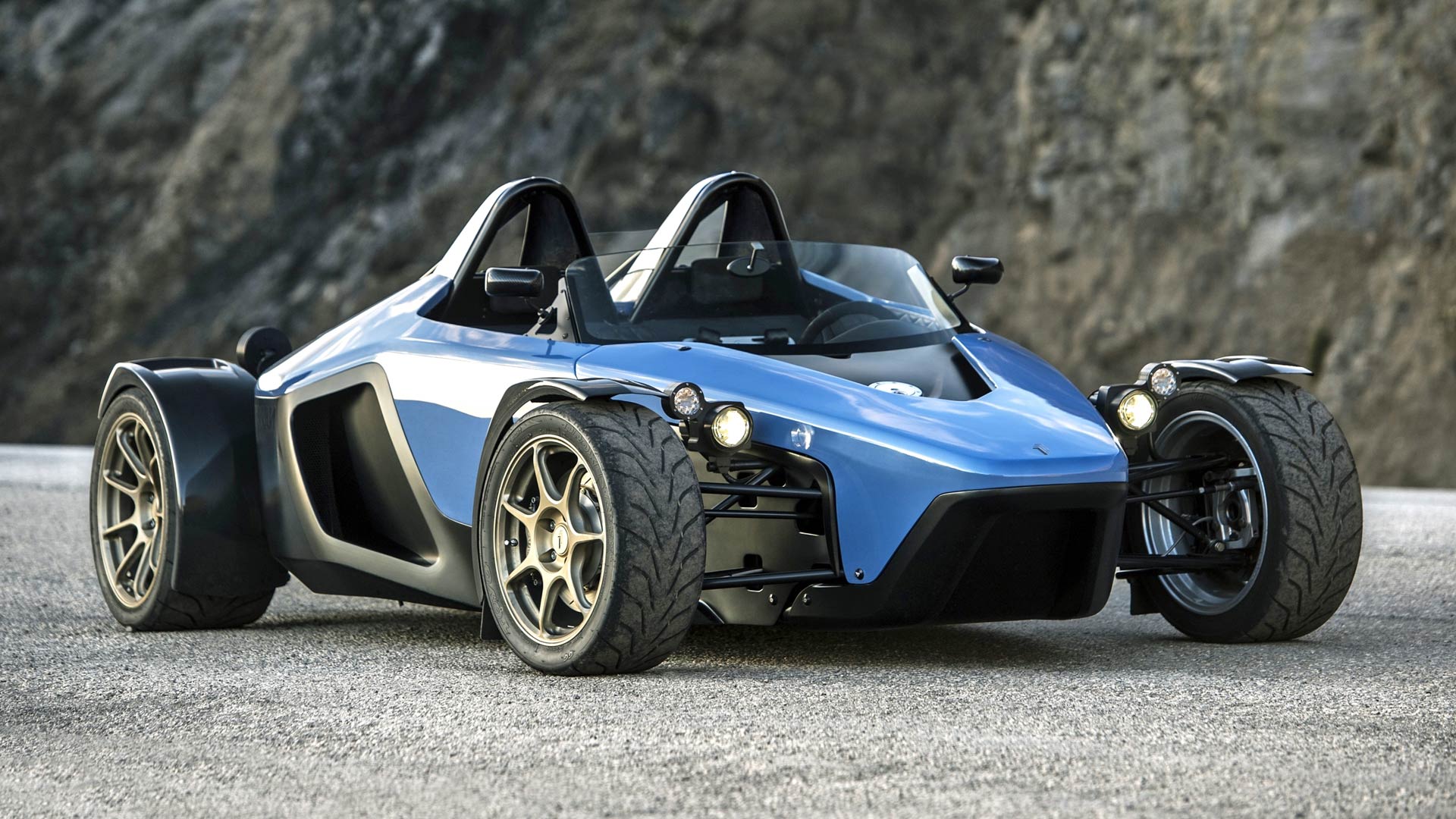
2016 Rezvani Beast Alpha
© RezvaniRezvani was founded in 2013, with the Californian company producing sports cars and its extreme Tank off-roader. The Beast sports car was revealed in 2015, using the chassis from the lightweight Ariel Atom. Initial versions of the Beast used a supercharged 2.4-liter Honda four-cylinder engine, producing 300 horsepower.
In 2016, the company revealed the Beast Alpha. A fixed-roof coupe model, it boasts optional ‘sidewinder’ doors, and a new 2.5-litre Cosworth engine developing 500 horsepower.
Further versions of the Beast have added more power, with the Beast also appearing in music videos with Chris Brown and Enrique Iglesias.
-
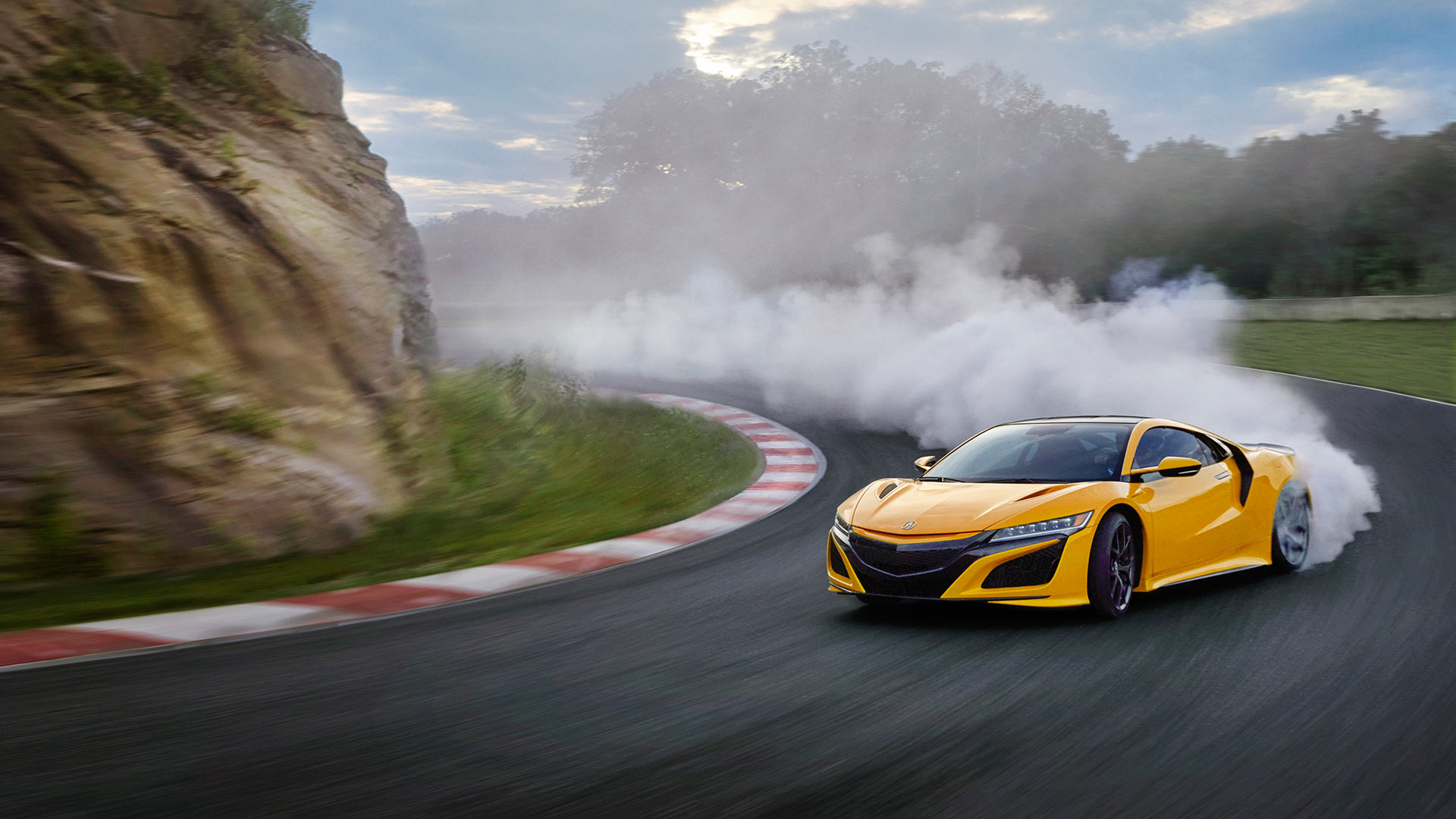
2016 Acura NSX
© AcuraAcura may be the luxury division of Honda, but the second-generation NSX is almost as American as apple pie. Whilst designed for a global audience, North America is the primary market for the new NSX, with production taking place at Honda’s Performance Manufacturing Center in Maryland, Ohio.
Sitting in the middle of the NSX is a 3.5-liter twin-turbocharged V-6 engine, combined with three electric motors, for hybrid all-wheel drive performance. With a total power output of 573 horsepower, the hybrid NSX can accelerate from 0-60 mph in under 3 seconds, and on to over 190 mph.
-
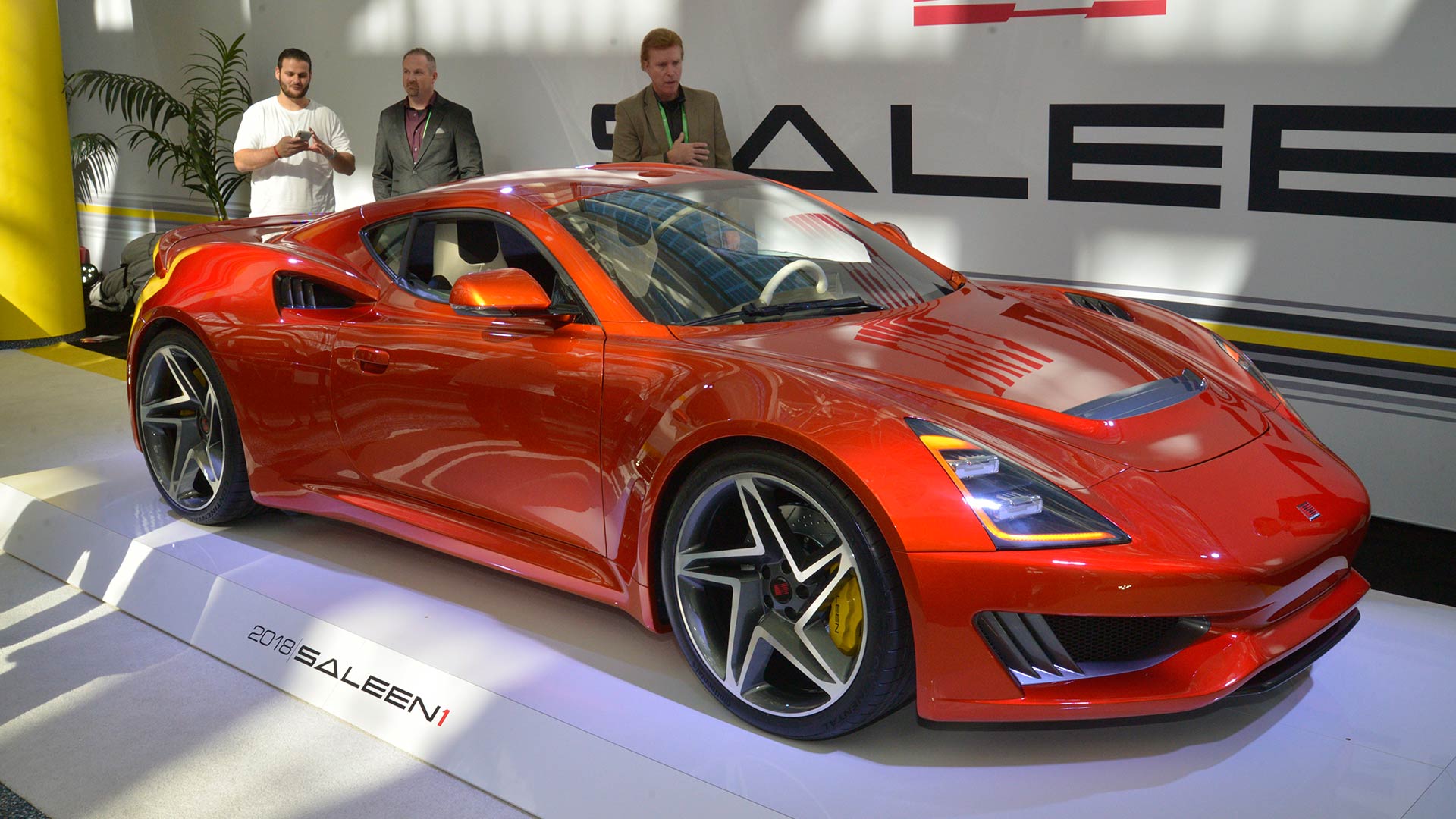
2017 Saleen S1
© SaleenA decade after Saleen ended production of the S7, the 2017 Los Angeles Auto Show saw the debut of a brand-new sports car from the American brand. Rather than focussing on straight line speed, the S1 aims to deliver agility with an aluminum chassis and carbon fiber body panels.
A mid-mounted 2.5-liter four-cylinder turbo offers up 450 horsepower, combined with a six-speed manual transmission. Steve Saleen planned to produce the S1 in China through a joint venture. However, the Chinese government seized the production facilities during the Coronavirus pandemic, with hundreds of Saleen patents then filed by Chinese shareholders.
-
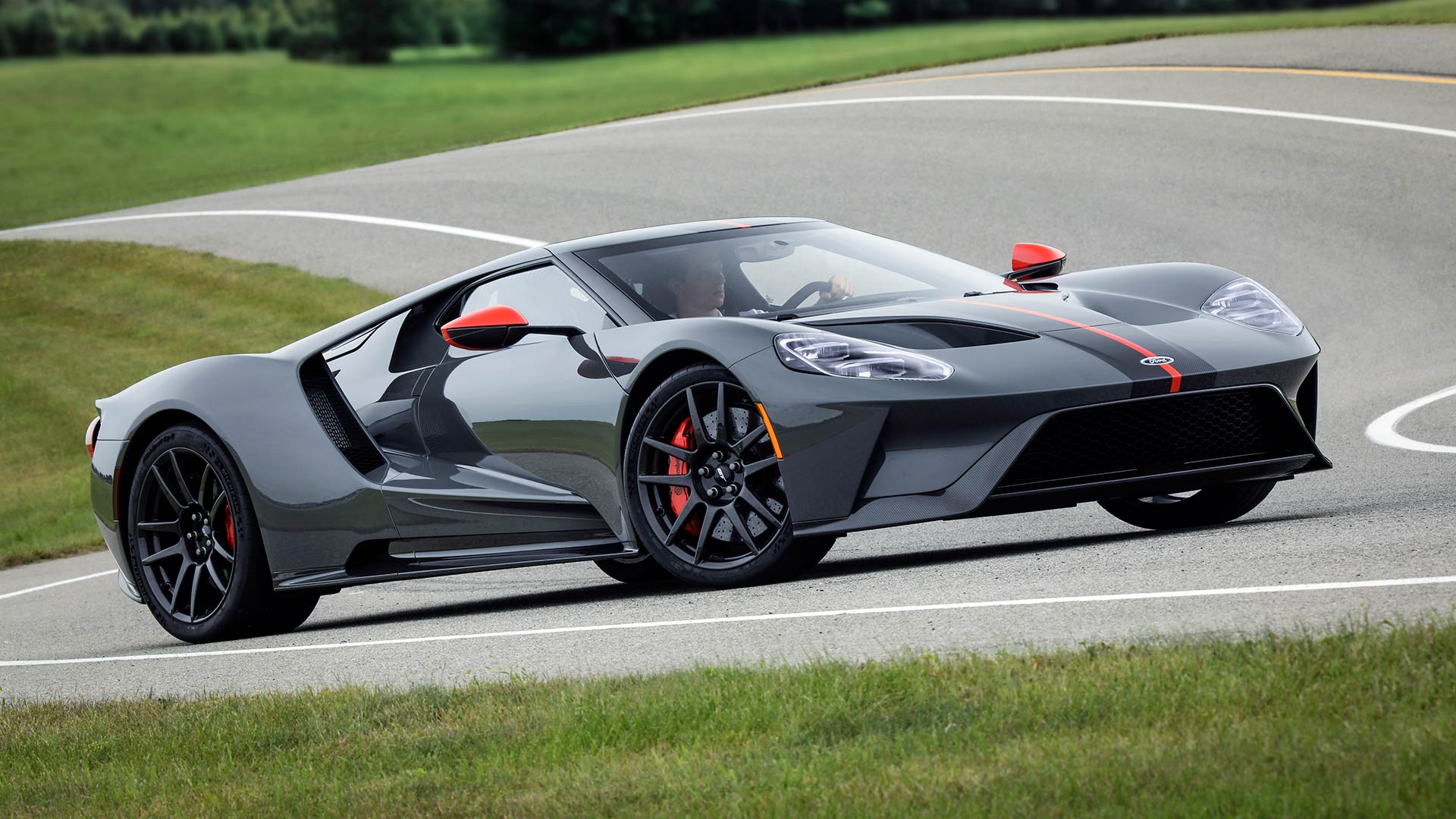
2017 Ford GT
© FordThe second-generation Ford GT abandoned retro styling for a thoroughly modern design, using a mid-engined carbon fiber chassis and a twin-turbocharged EcoBoost V-6 engine. Although the technology may be nothing like the original GT40, racing versions have still proved successful, including victory at the 2016 Le Mans 24 Hour race.
Interest in the 647 horsepower GT was so great that Ford was able to pre-select who would qualify to buy one of the $500,000 supercars. Is the GT truly American though? Despite being designed in the USA, production actually takes place north of the border in Markham, Ontario.
-
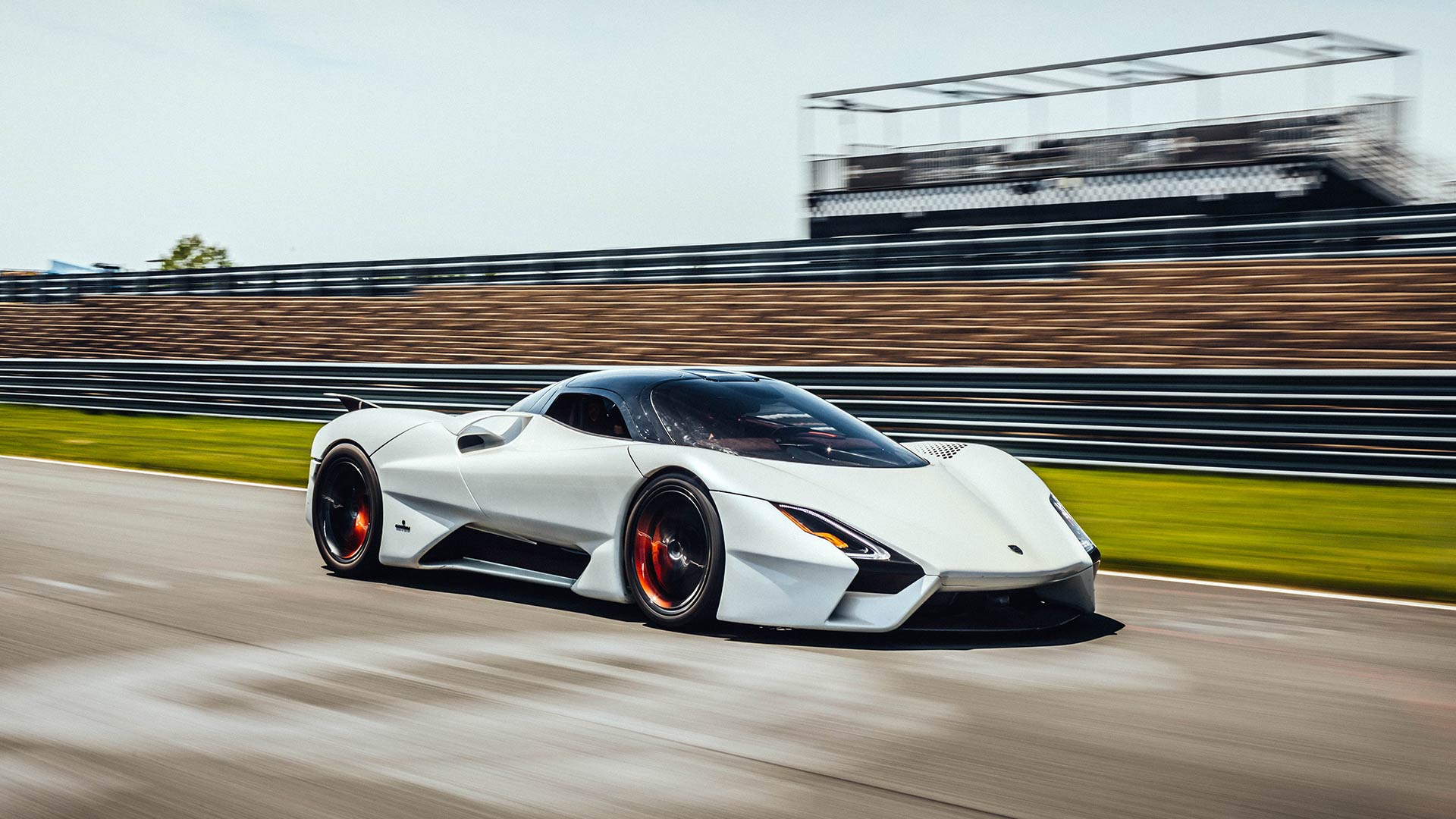
2019 SSC Tuatara
© SSCThe SSC Tuatara aims to improve on the performance shown by the Ultimate Aero, with the aim of breaking the 300 mph barrier. A bespoke carbon fiber chassis mounts a custom-designed twin-turbocharged 5.9-liter V-8 engine in the middle.
Regular gasoline sees a power output of 1,350 horsepower, whilst using E85 ethanol results in an incredible 1,750 horsepower. Designed with an aerodynamic shape, the Tuatara is fitted with a seven-speed semi-automatic transmission sending all the power to the rear wheels. Inside is a speedometer which, tellingly, reads all the way to 300 mph.
-
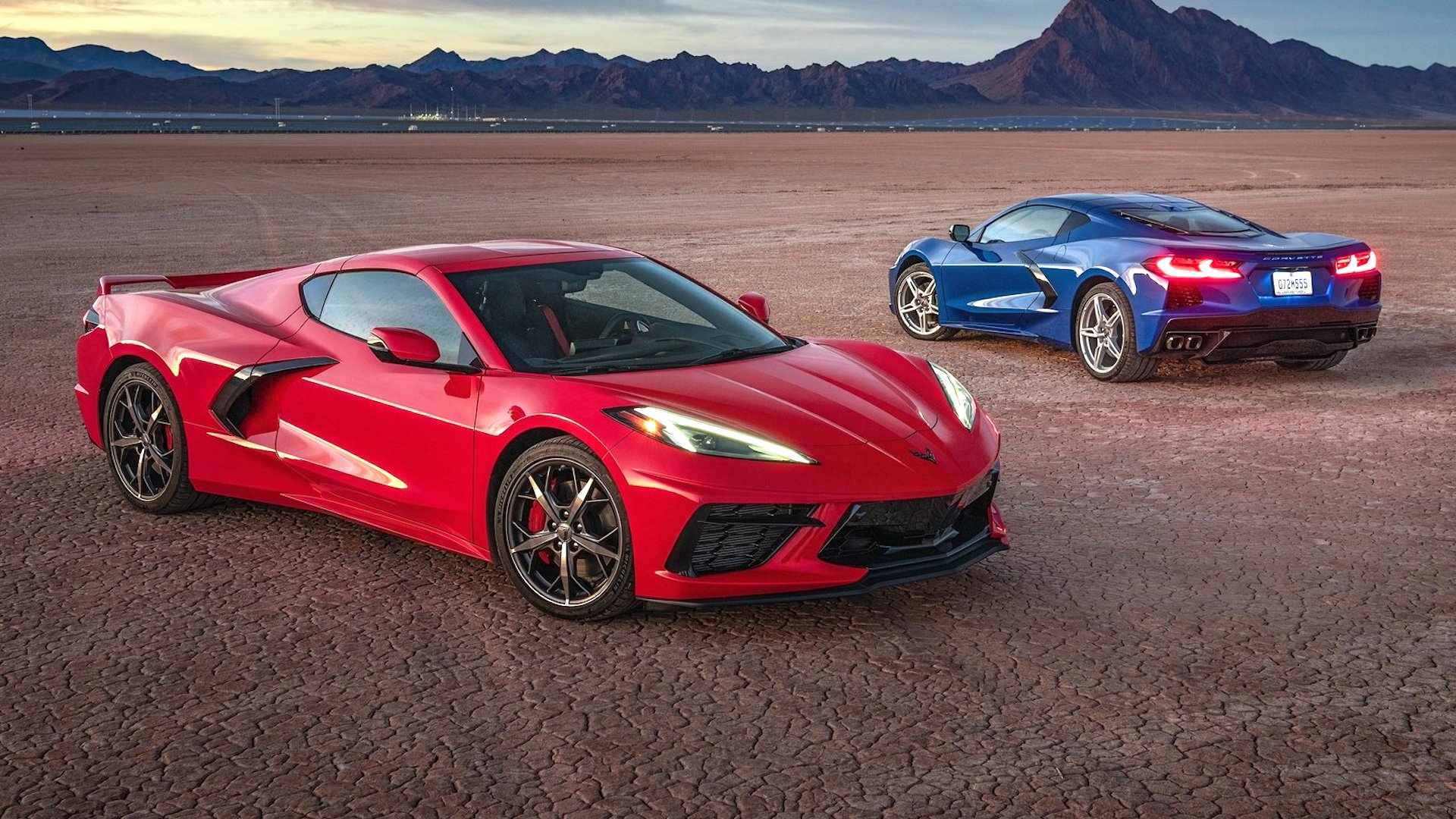
2020 Chevrolet Corvette Stingray
© ChevroletA full two years after the debut of the eight-generation Chevrolet Corvette has just about given Chevrolet fans time to adjust. Despite the numerous concepts and show cars, the actual switch to a mid-engined layout for the Corvette proved to be something of a shock
Ditching a front-engined design was due to the classic layout beginning to limit the Corvette’s performance. Handling, braking, and traction all benefit from moving the engine to the middle, along with packaging the Corvette to sell in right-hand drive markets.
At least a traditional 6.2-liter V-8 engine, producing up to 495 horsepower, is found in the Corvette.
-
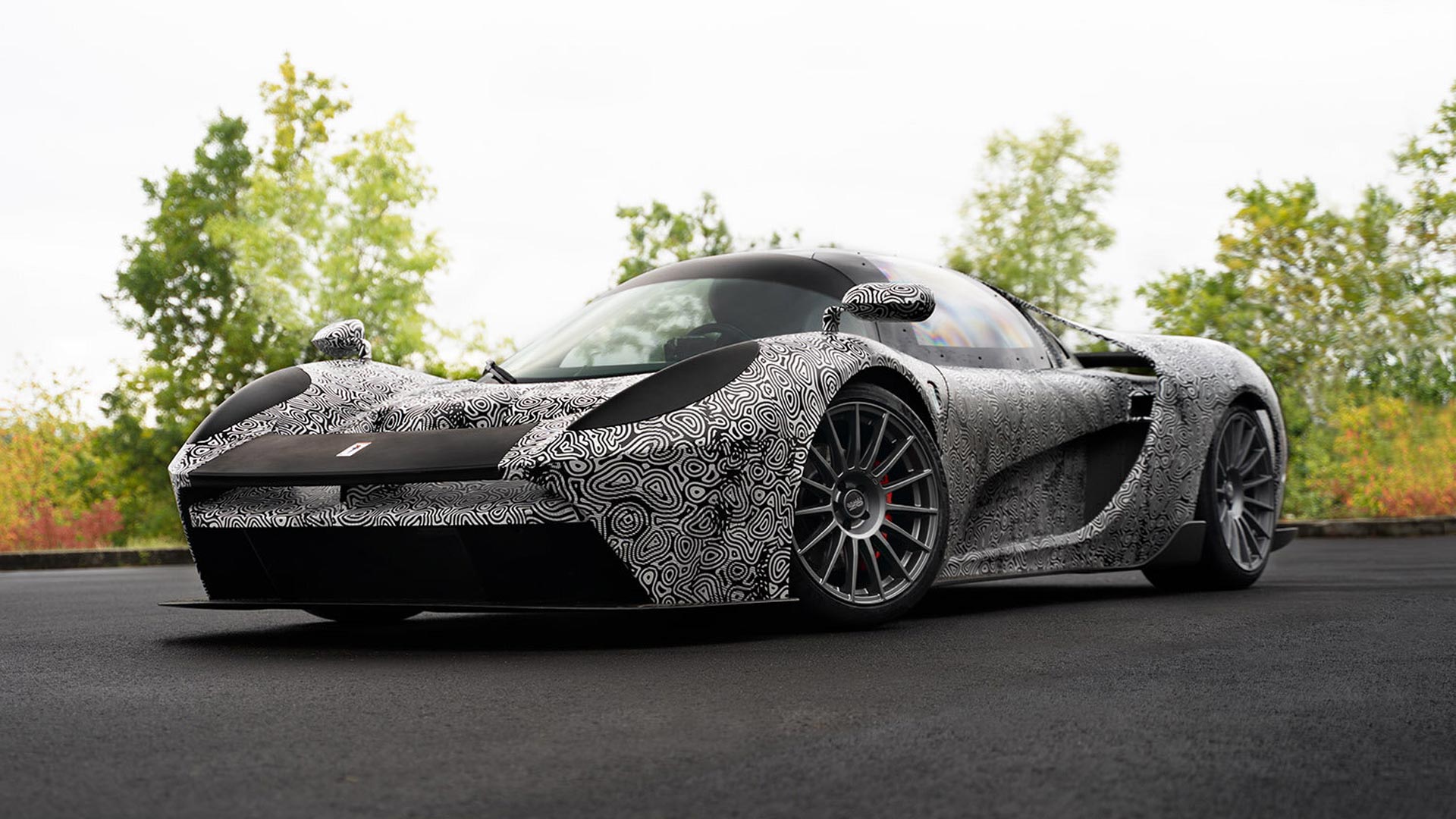
2020 Scuderia Cameron Glickenhaus SCG 004S
© SCGAs a follow-up to the SCG 003S, Scuderia Cameron Glickenhaus unveiled the SCG 004S in 2017. Production began at its Danbury, CT facilities in late 2020, with the SC4 004S boasting a special three-seater layout. Like the McLaren F1, the SCG 004S sees the driver positioned in the middle of the cockpit.
The street-legal 004S version uses a supercharged 6.2-liter GM LT4 V-8 engine, producing 650 horsepower. A six-speed manual transmission is standard, while customers can opt for adjustable Bilstein suspension, or a carbon fiber finish for the bodywork.
Scuderia Cameron Glickenhaus also offers the track-day orientated 004CS, and race-spec 004C versions.
-

2021 Hennessey Venom F5
© HennesseyWhat is better than a top speed of 300 mph? A potential top speed of 311 mph, of course. Hennessey promises that the successor to the Venom GT will offer even more performance, and comes with advanced technology like active aerodynamics and a body made entirely from carbon fiber.
At the heart of the Venom F5 – named after the Fujita tornado scale – is a 6.6-liter twin-turbocharged V-8 engine. Branded the ‘Fury’, this mid-mounted motor has been developed with Pennzoil, and has been confirmed to produce 1,817 horsepower and 1,193 lb ft of torque.
Even when initially tested with just half the horsepower output, the Venom F5 reached speeds of over 200 mph. It has since topped more than 271 mph.
-
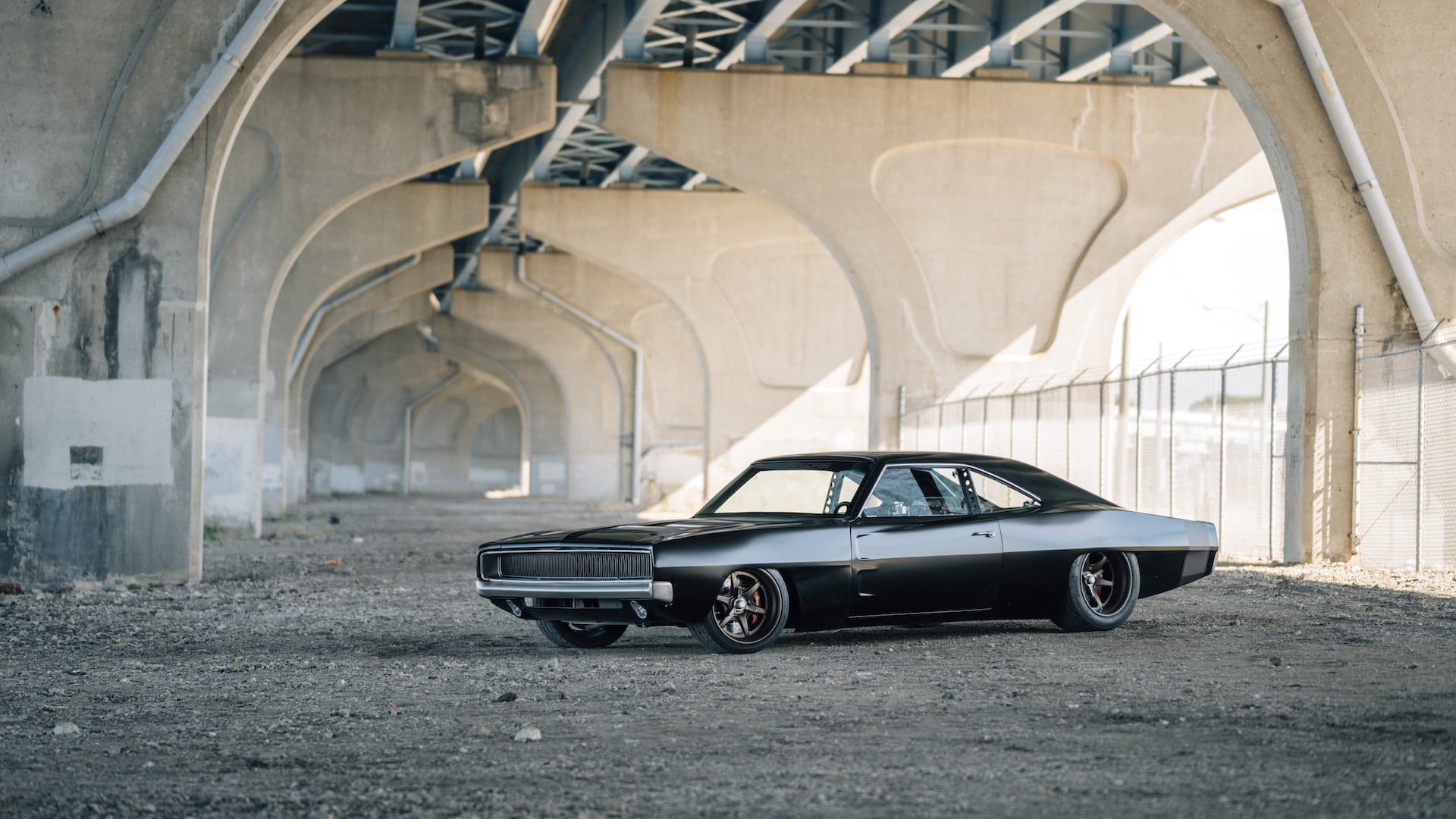
2021 SpeedKore Hellacious Charger
© SpeedKoreOne of the main stars of the new Fast & Furious movie, F9, is a mid-engined 1968 Dodge Charger built by Wisconsin-based SpeedKore. The extreme build has transformed the classic muscle car into a carbon fiber supercar, delivering maximum performance.
A 6.2-liter Dodge Hellcat engine delivers 707 horsepower, with a custom exhaust and a bespoke cooling system for its new location. Sending the power to the rear wheels is a manual transmission, taken from a Lamborghini Gallardo supercar.
With extensive use of carbon fiber, Hellacious features unique bodywork and bespoke suspension components. An integrated firewall separates the cabin from the thunderous V-8 just inches behind.
-
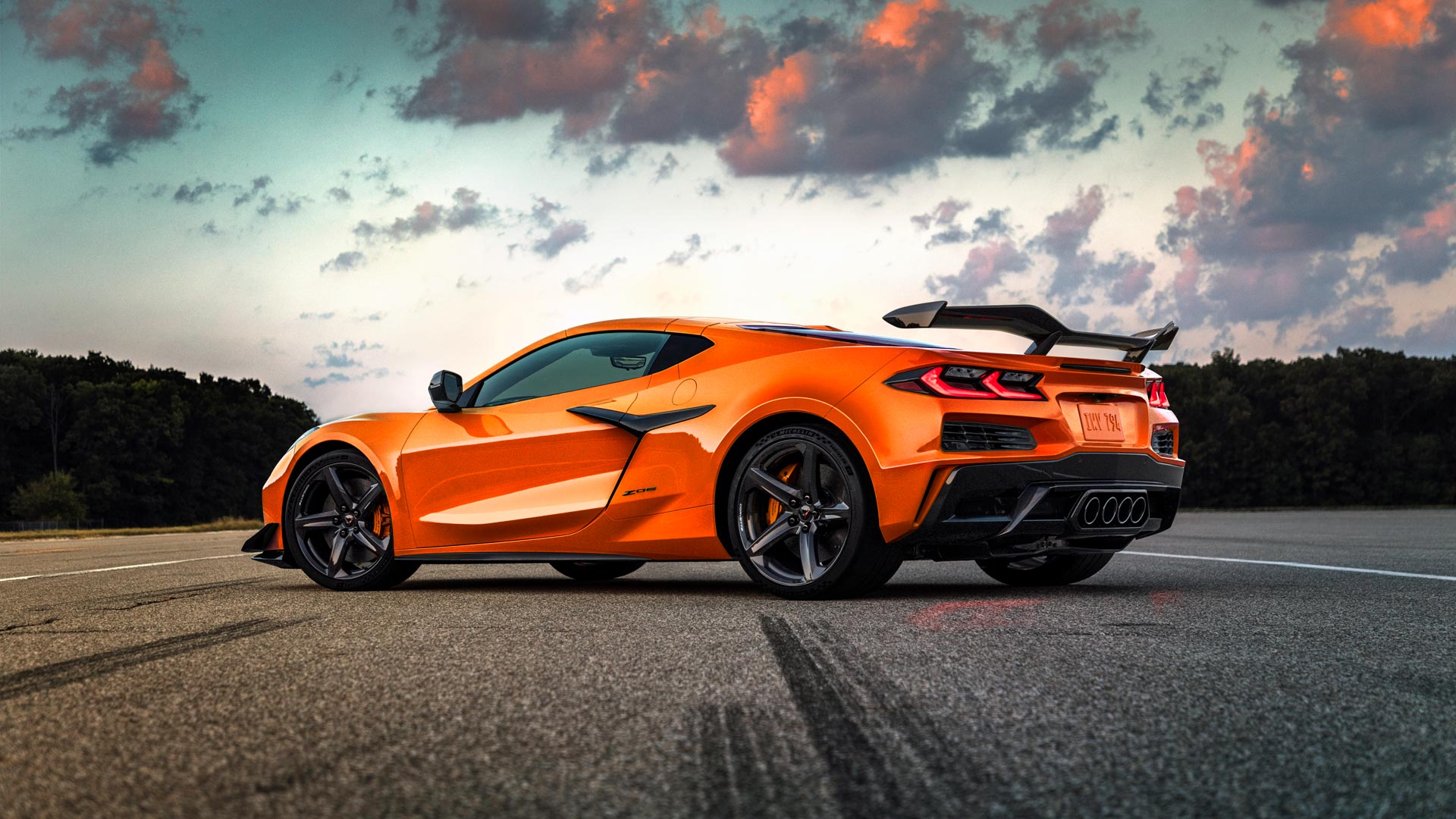
2022 Chevrolet C8 Corvette Z06
© ChevroletChevrolet described its successful Corvette C8.R race car as a “Z06 hiding in plain sight”, meaning this is very much a track tested performance machine. Wider than the regular C8 Stingray to accommodate fatter tires, the Z06 can also be ordered with a large rear spoiler.
Purists may now have mostly accepted the mid-engined Corvette, and the Z06’s 5.5-liter flat-plane V-8 is likely to help convince the rest. Revving to 8,600 rpm, the new LT6 motor delivers 670 horsepower, with 460 lb-ft of torque.
According to Chevrolet, this makes it the highest-horsepower, naturally-aspirated, V-8 engine to be fitted to any production car.
-
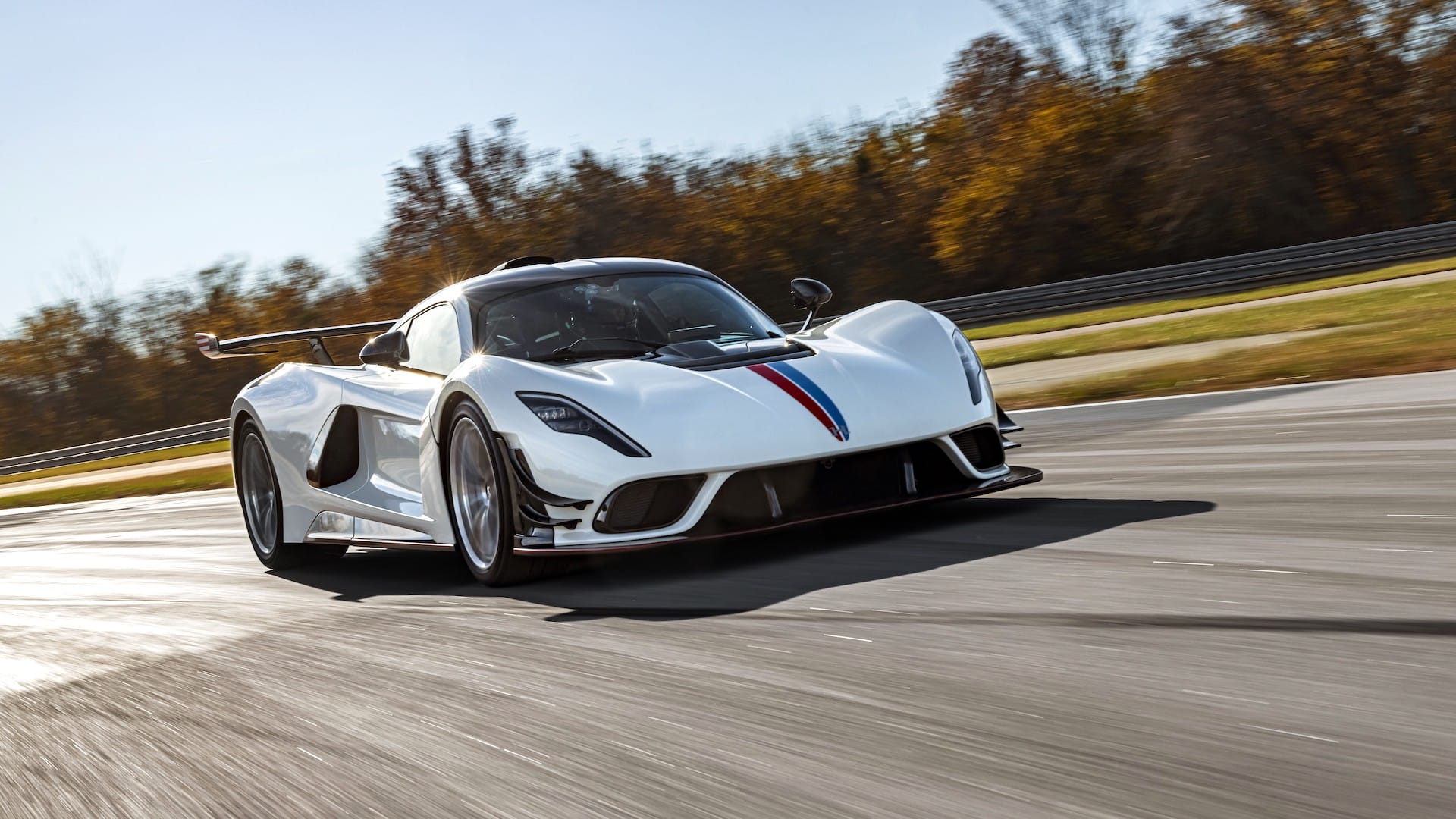
2023 Hennessey Venom F5 Revolution Coupe
© HennesseyHennessey has continued to refine and improve the Venom F5 supercar, including the addition of a track-focused version.
Although the Revolution does not feature any more horsepower from itsmid-mounted engine, it does generate a huge amount of downforce. New aero addenda see it produce 800 lb of downforce at 186 mph – and upwards of 1,400 lb at 249 mph.
Only 24 examples of the Venom F5 Revolution will be made in coupe guise, along with 12 roadsters.
-
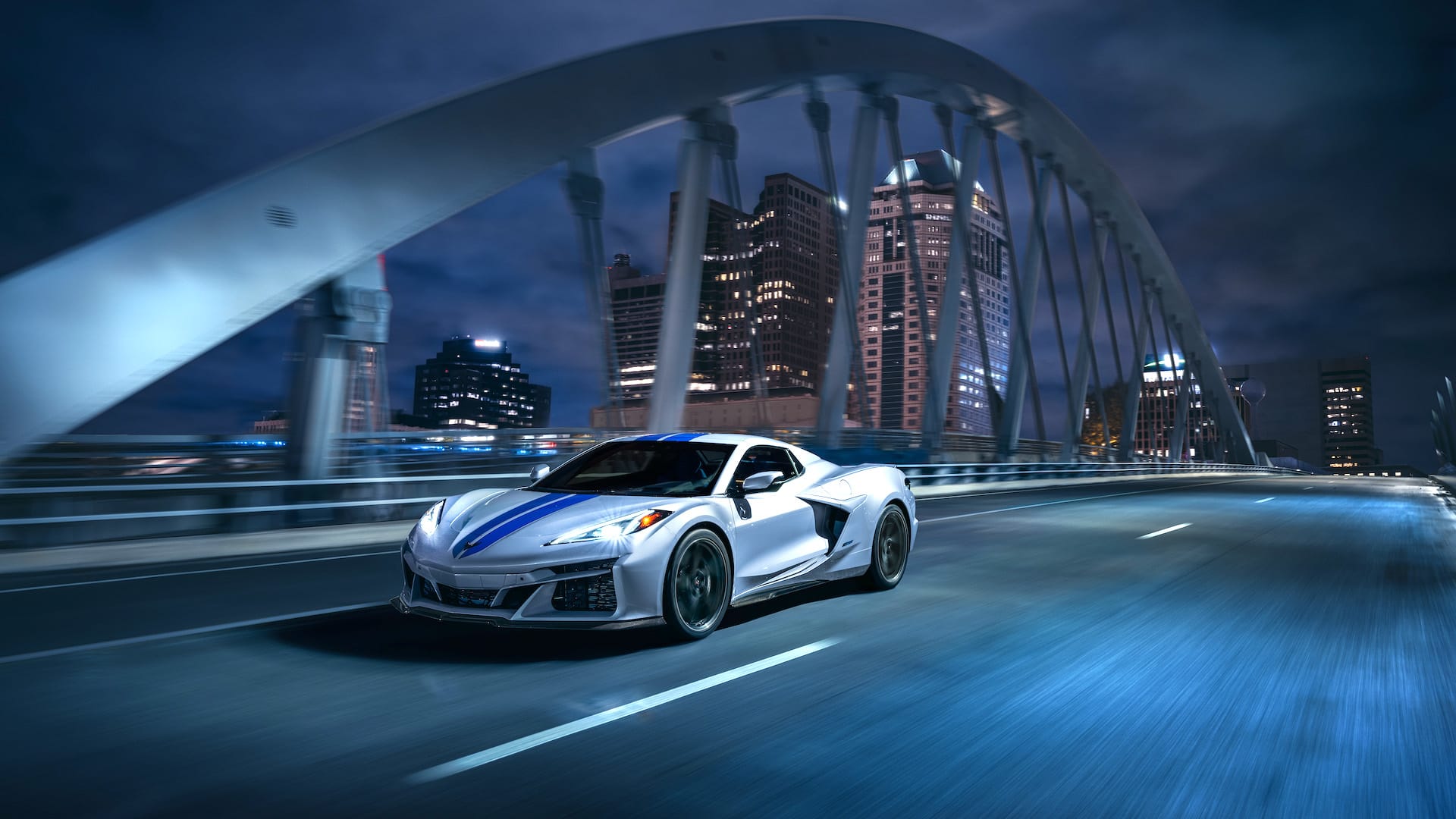
2024 Chevrolet Corvette E-Ray
© GMChevrolet had already made a major leap into the unknown by creating a mid-engined Corvette. Now, with the E-Ray, it has built a hybrid-powered version of its sports car icon.
The E-Ray combines the same 6.2-liter V-8 engine with a 160 horsepower electric motor. Producing a total of 655 horsepower, the electric motor is used to drive the front wheels, making this an all-wheel-drive Corvette.
With electric-only Stealth Mode engaged, the E-Ray can cover up to 45 miles with zero tailpipe emissions.
-

2024 Rezvani Beast
© RezvaniThe latest mid-engined Corvette is also the basis for the all-new 2024 Rezvani Beast, including the familiar 6.2-liter V-8 engine.
However, Rezvani has fitted twin turbochargers, resulting in a slightly ridiculous output of 1,000 horsepower, along with 878 lb-ft of torque.
As a result, the Beast should be able to accelerate from 0-60 mph in just 2.5 seconds, and complete a quarter-mile in just 9.6 seconds. This performance is aided by sticky, track-focused Michelin Pilot Sport Cup 2 R tires.
-
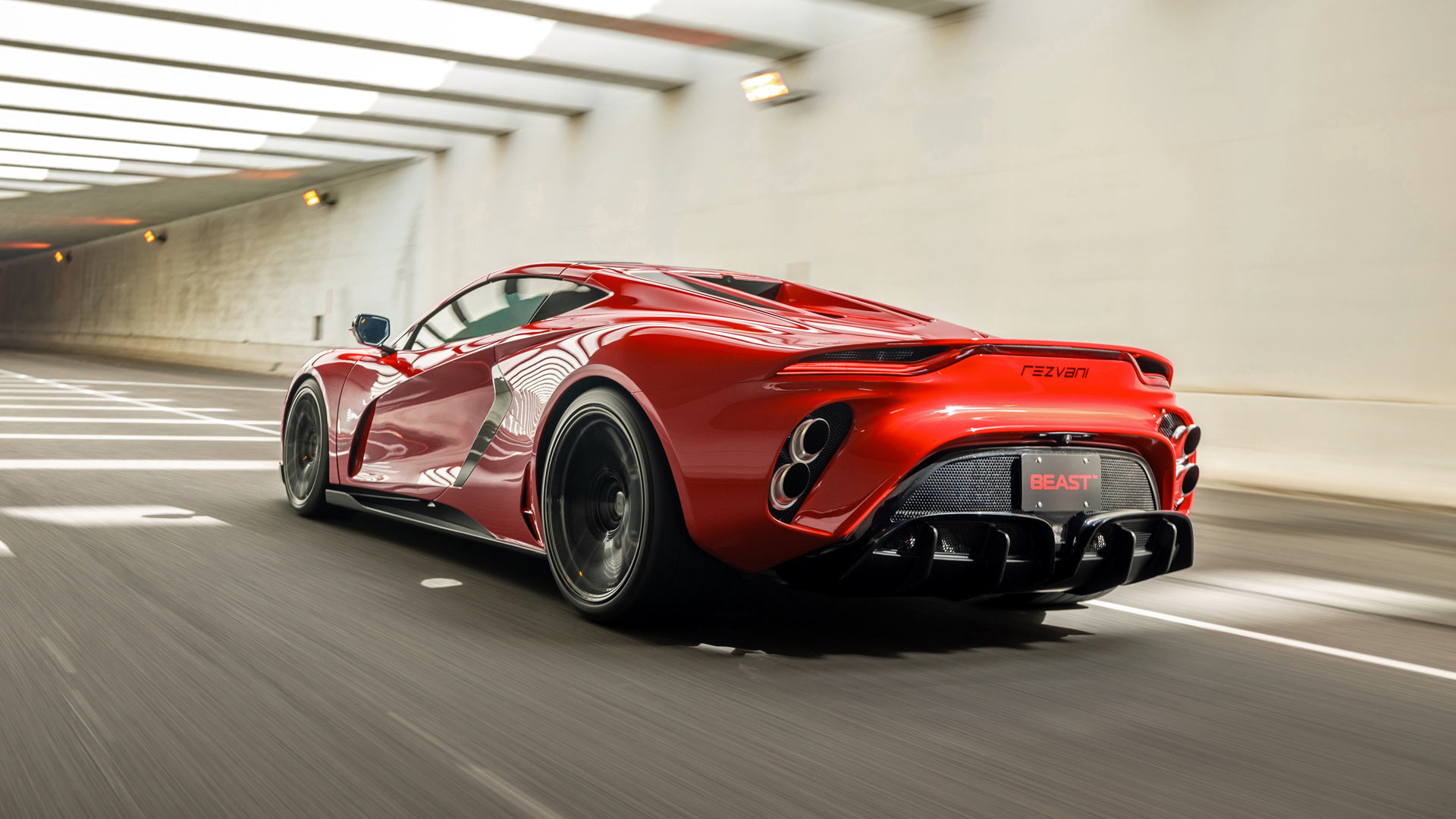
2024 Rezvani Beast
© RezvaniWith bespoke bodywork made from carbon fiber and ‘dragon-wing’ doors, the Rezvani Beast certainly looks different to its Corvette donor. Being kind, it perhaps resembles a vehicle from the Grand Theft Auto V video game.
The specification list also reads like the upgrades from a video game, such as the $55,000 bulletproof bodywork and glass option. A $45,000 ‘007 Package’ includes thermal night vision, gas masks, strobe lights and a pepper spray dispenser.
All this comes in addition to the $485,000 basic list price, although that seems almost reasonable for a 1,000 horsepower hypercar…